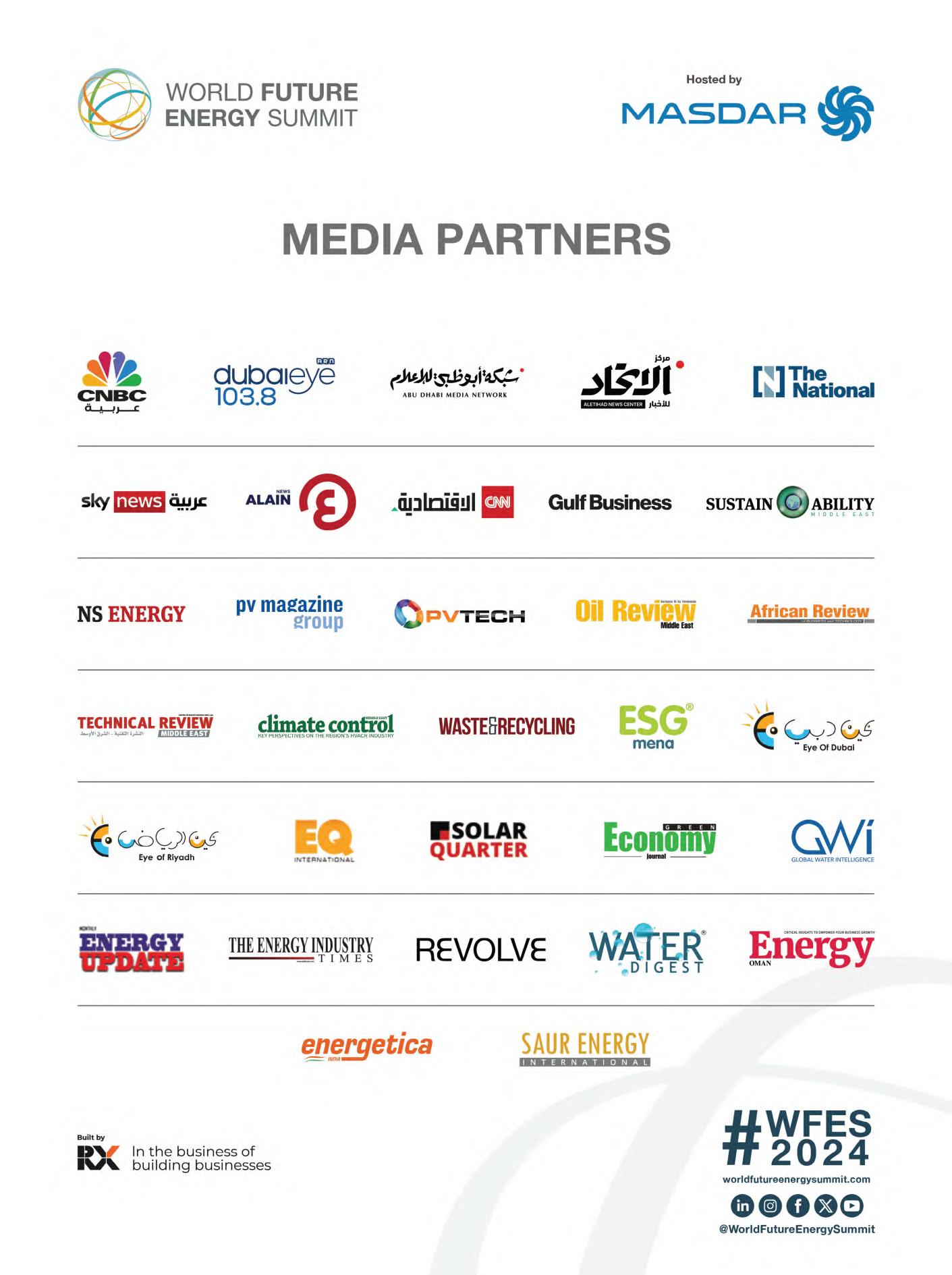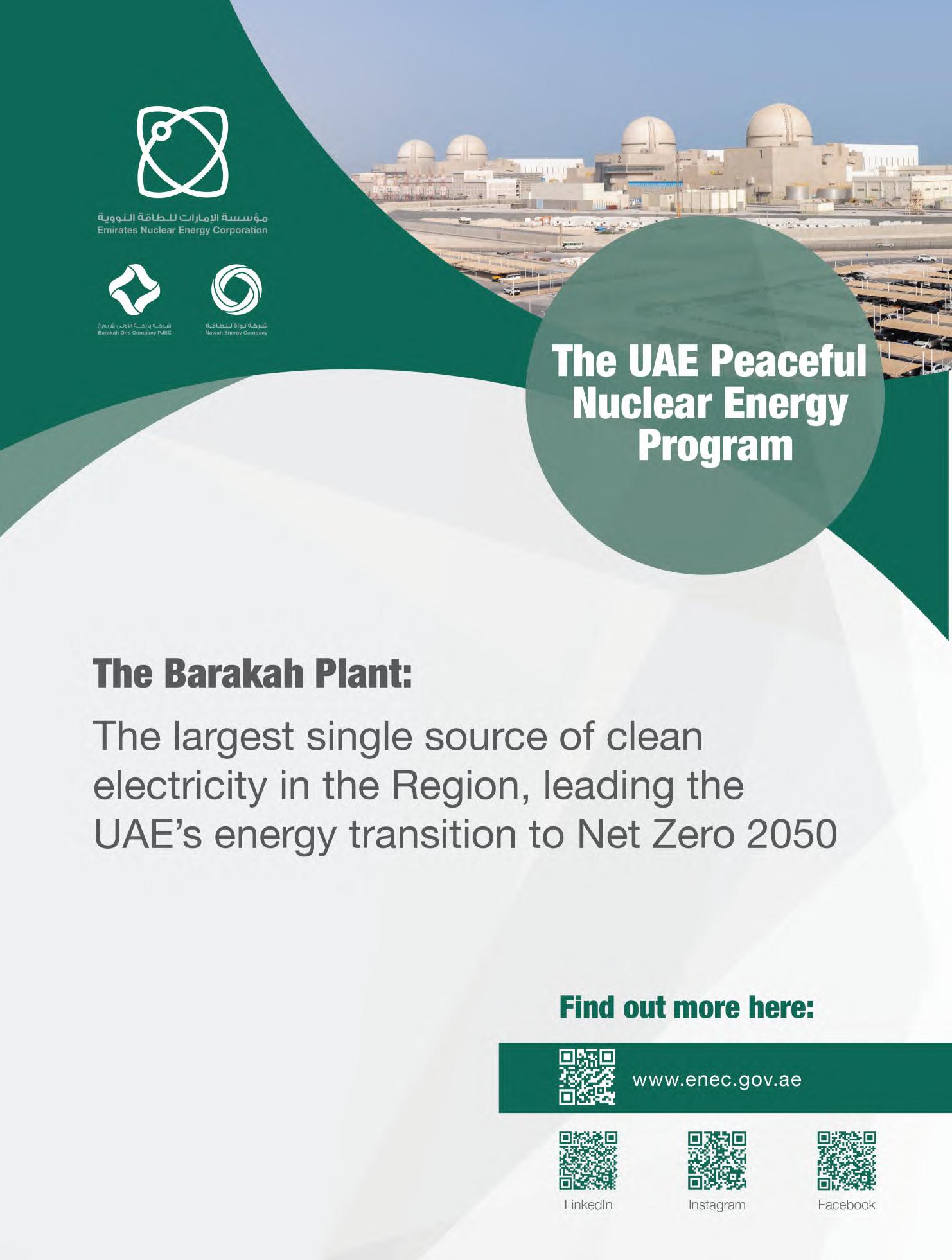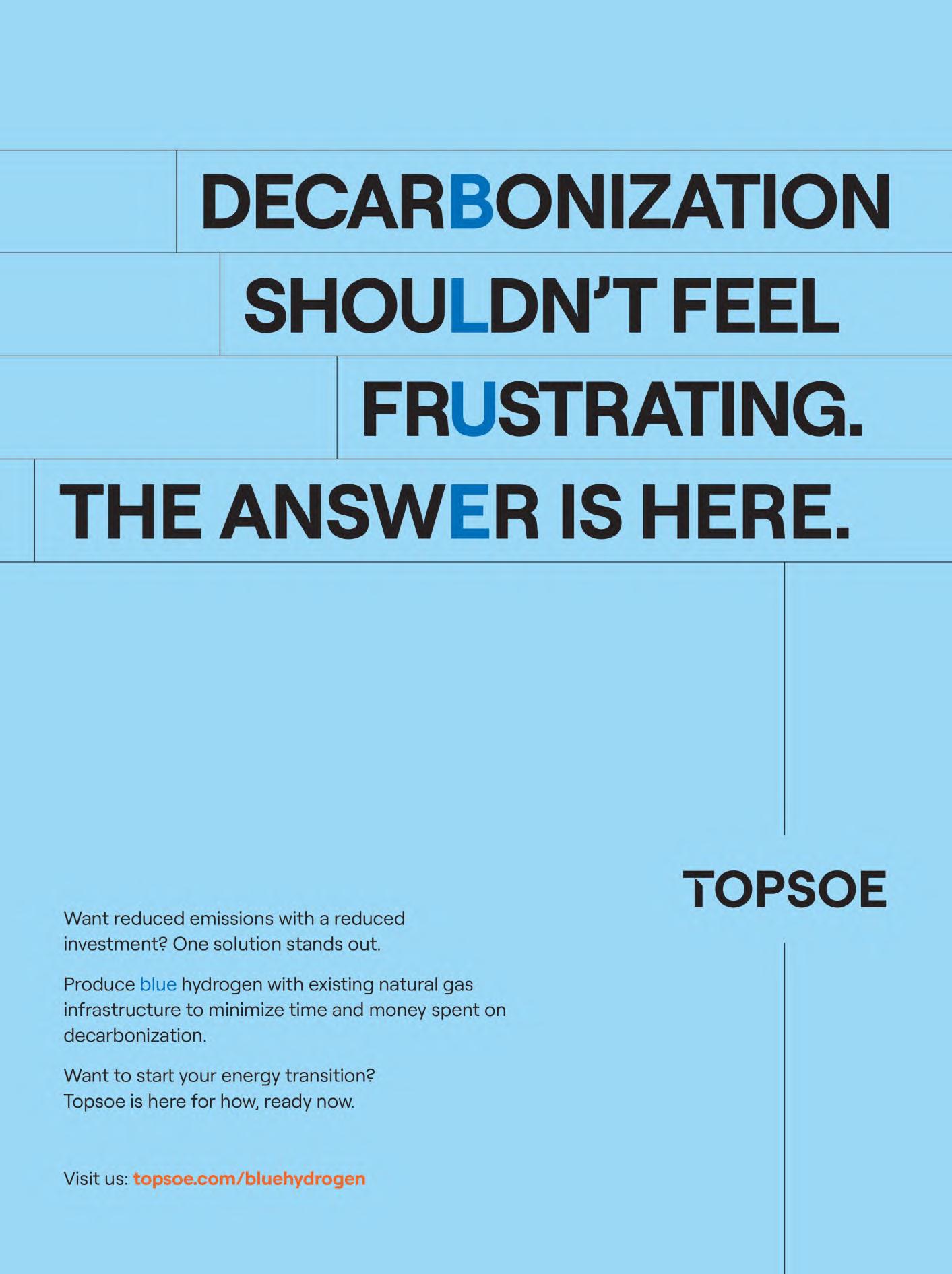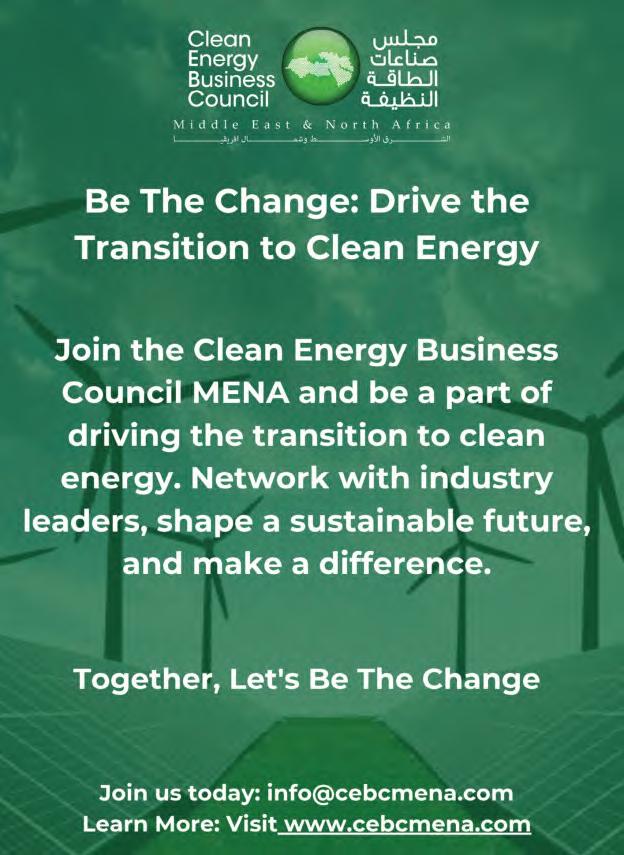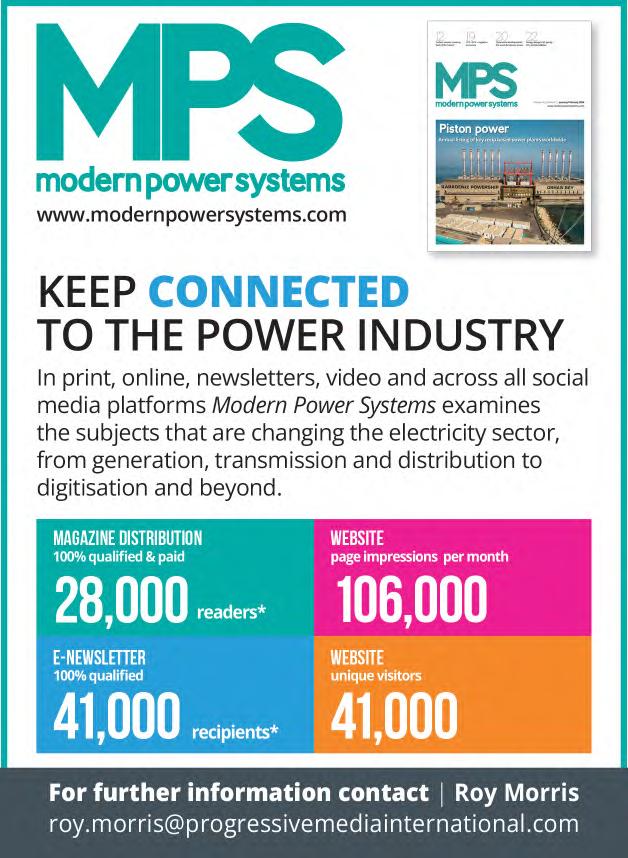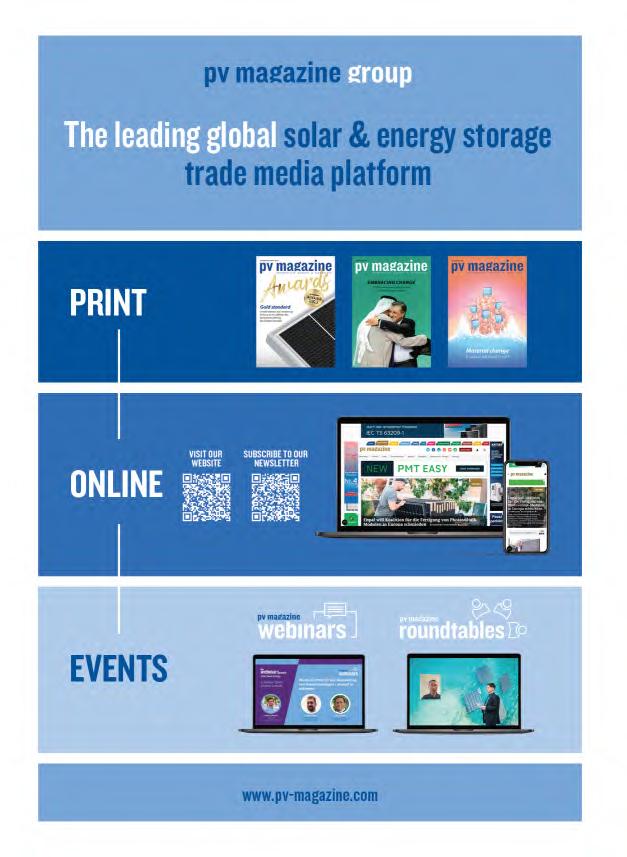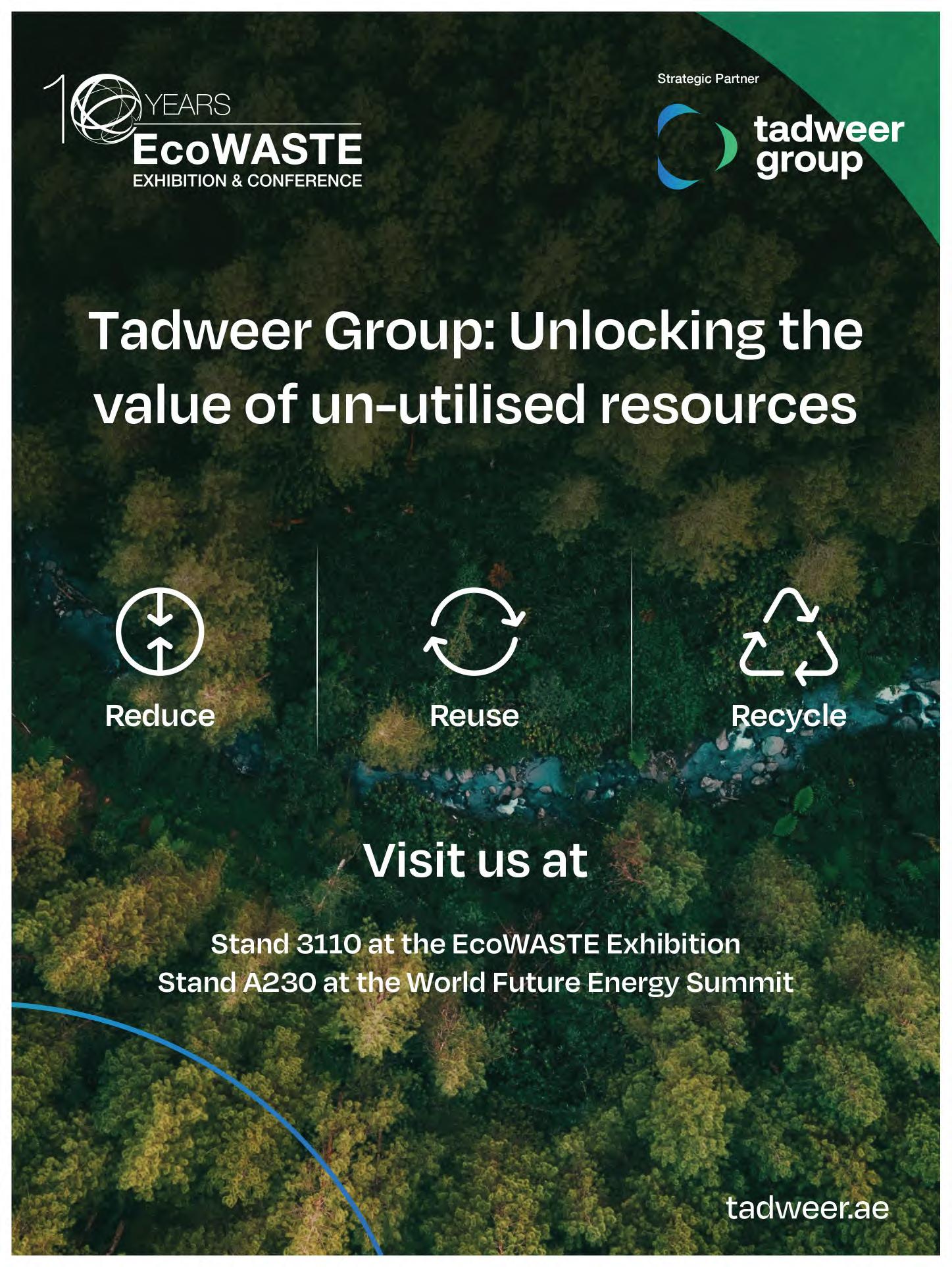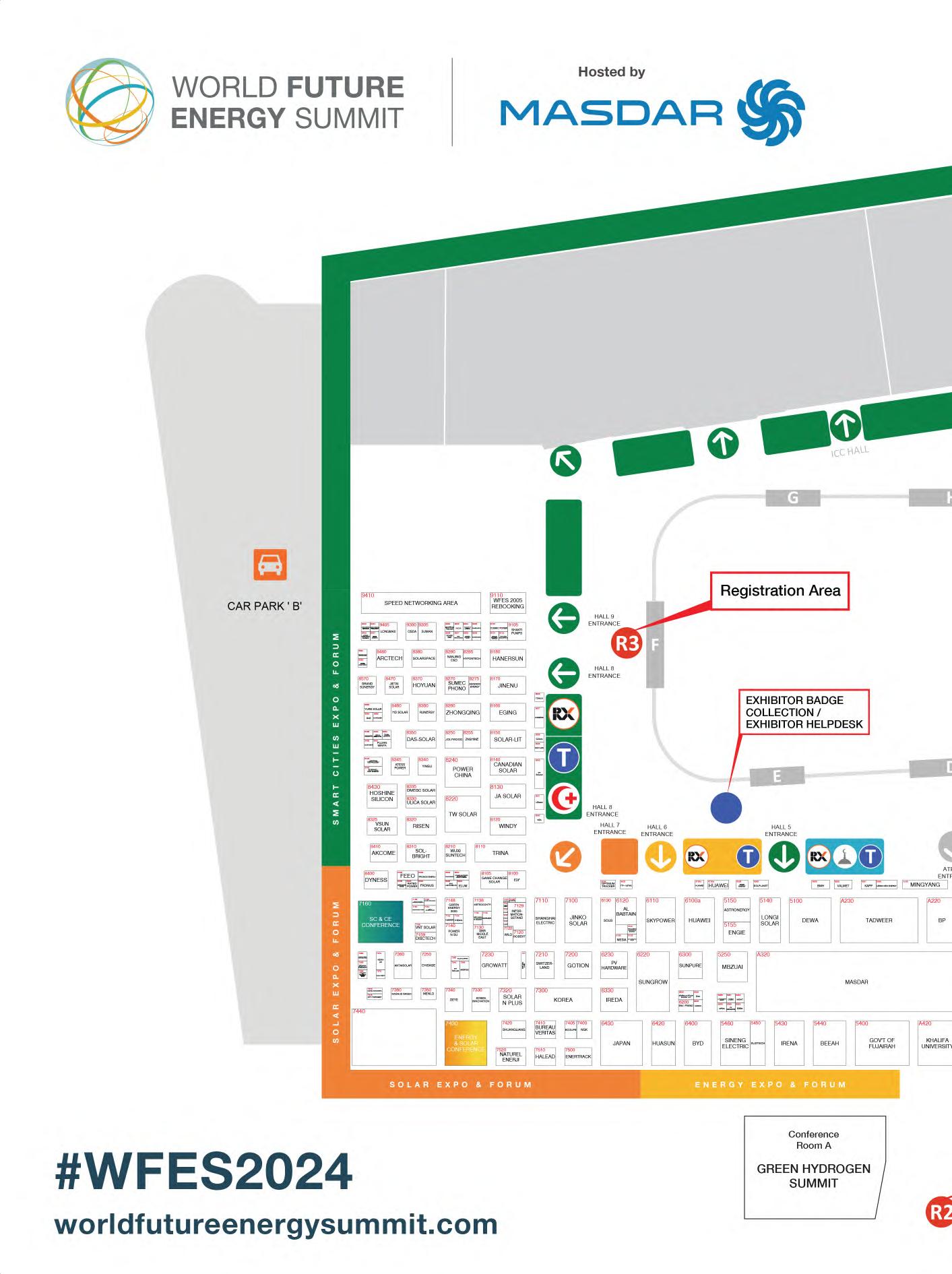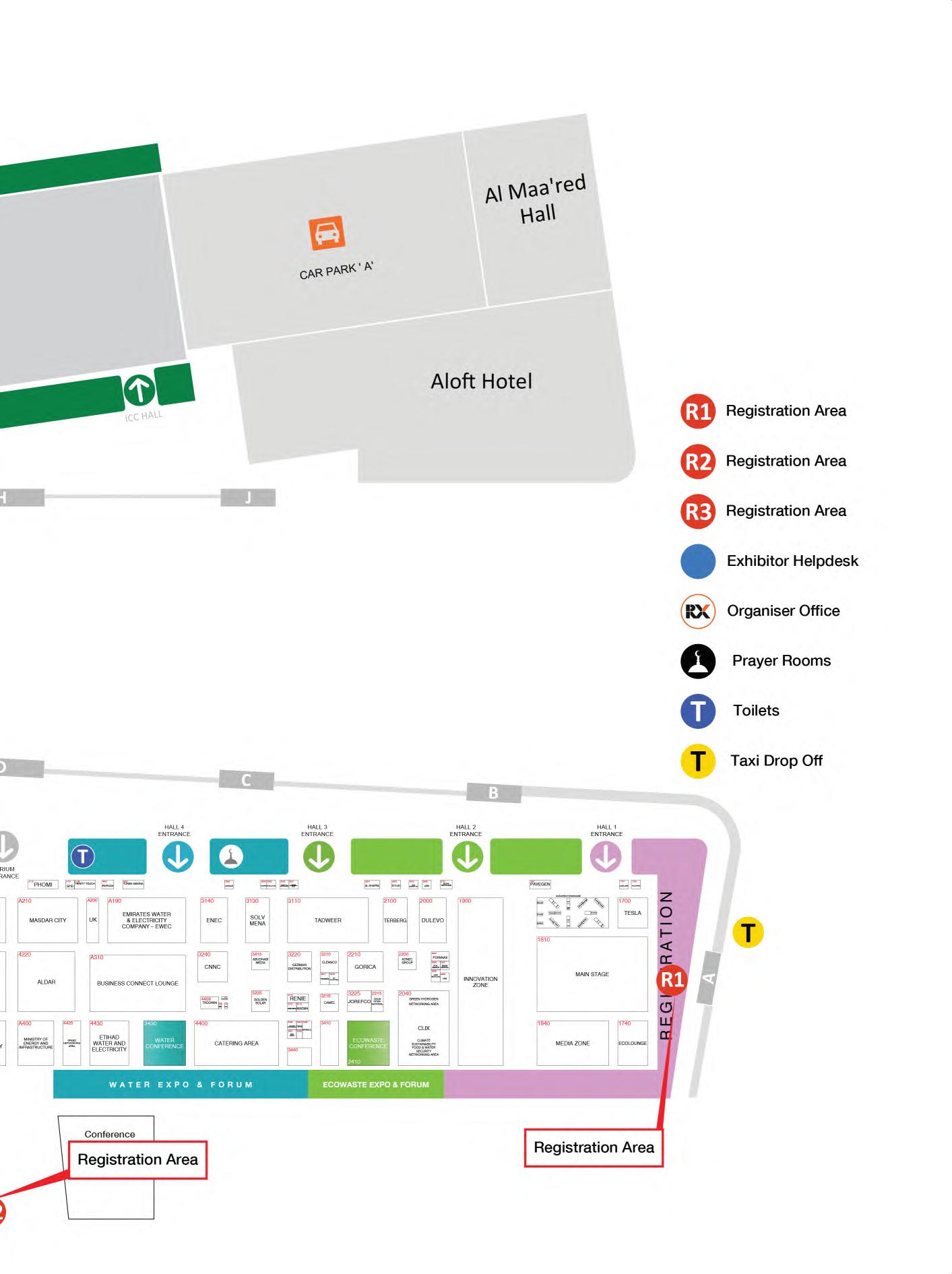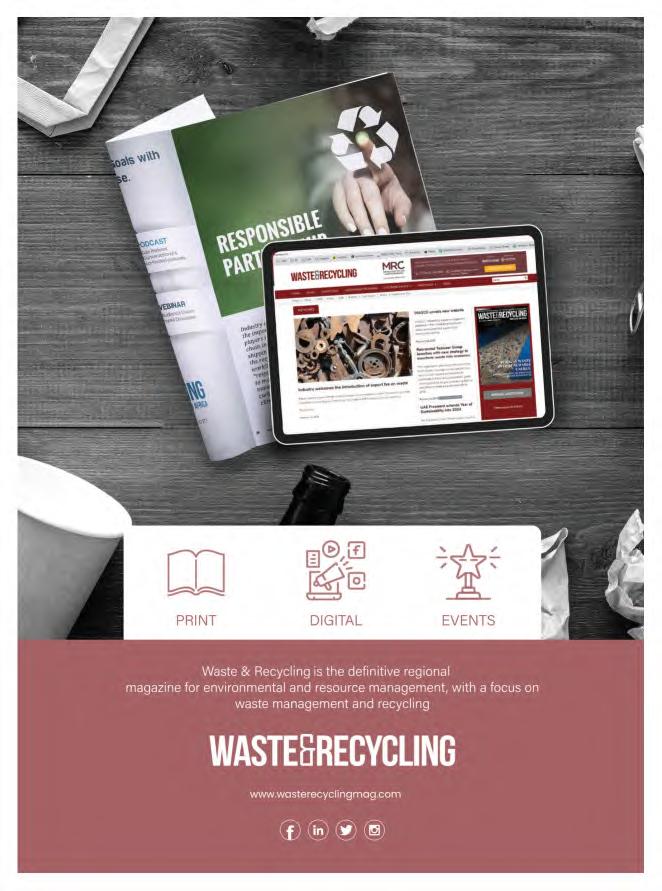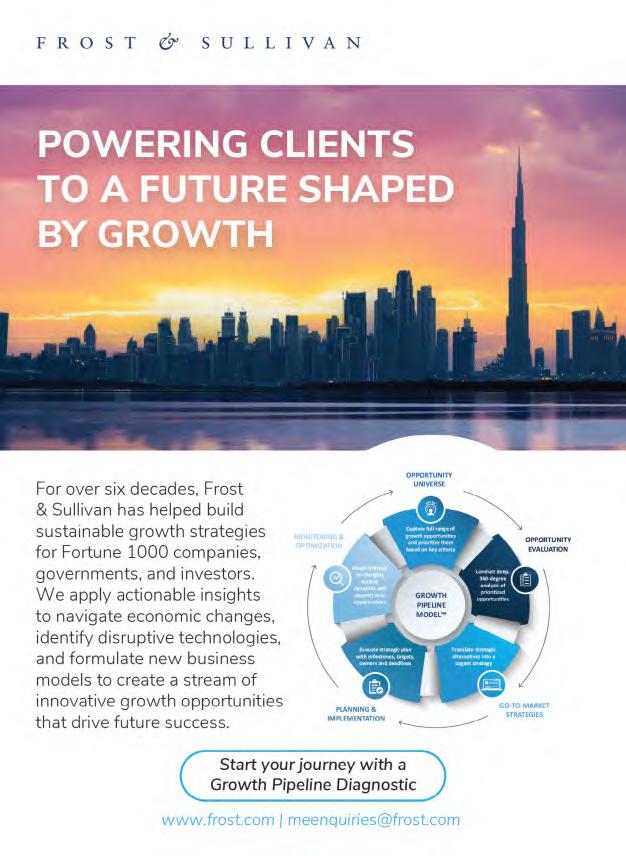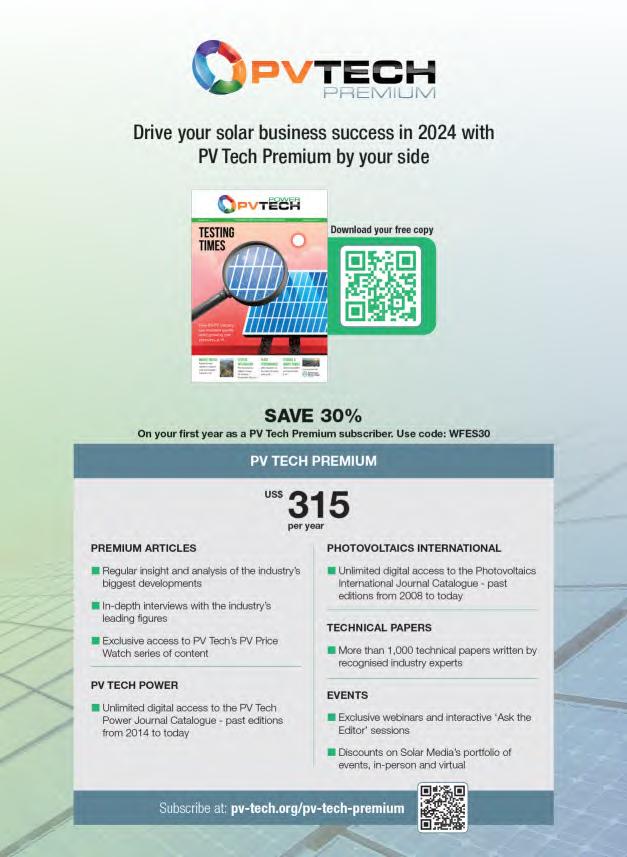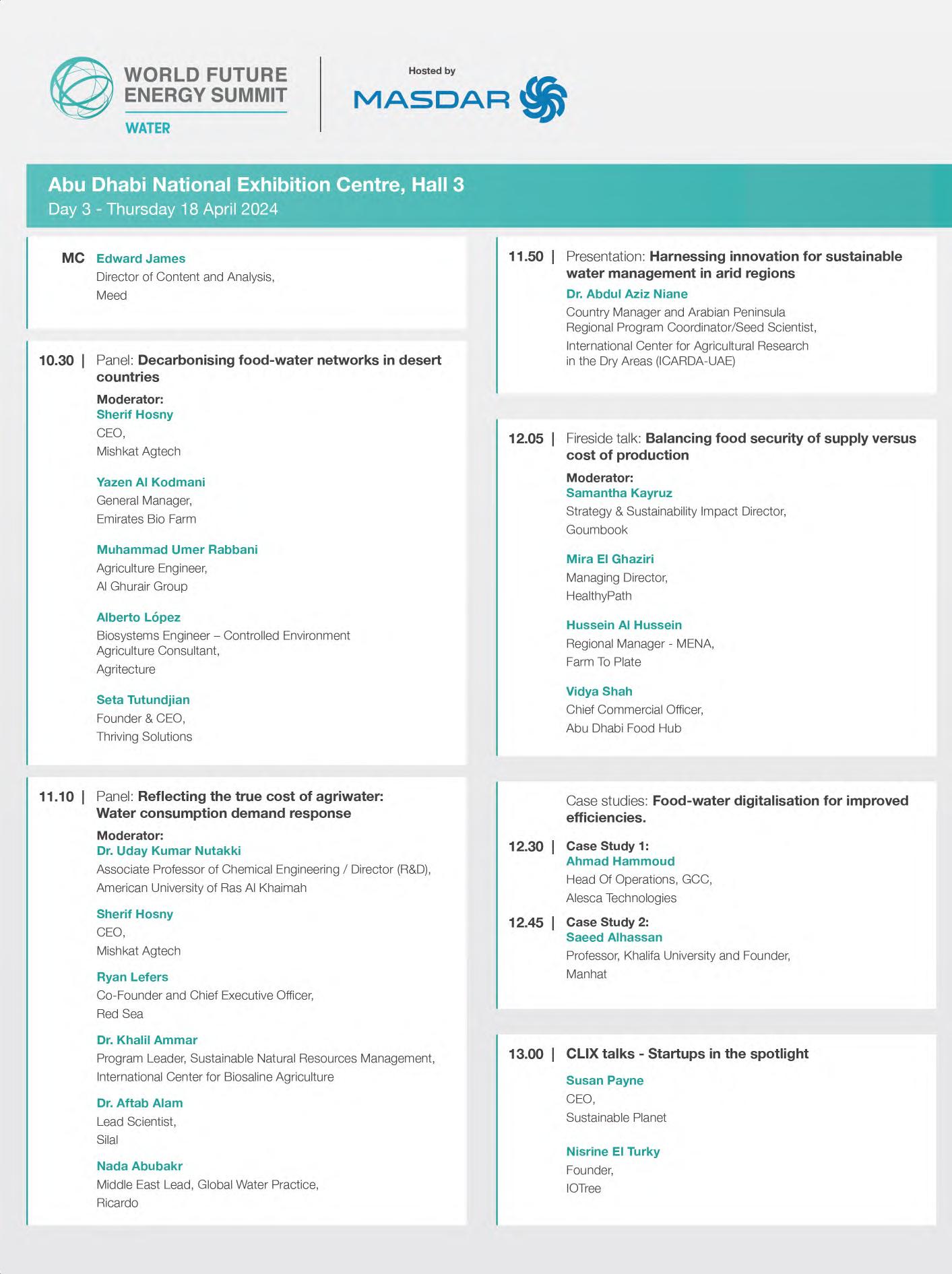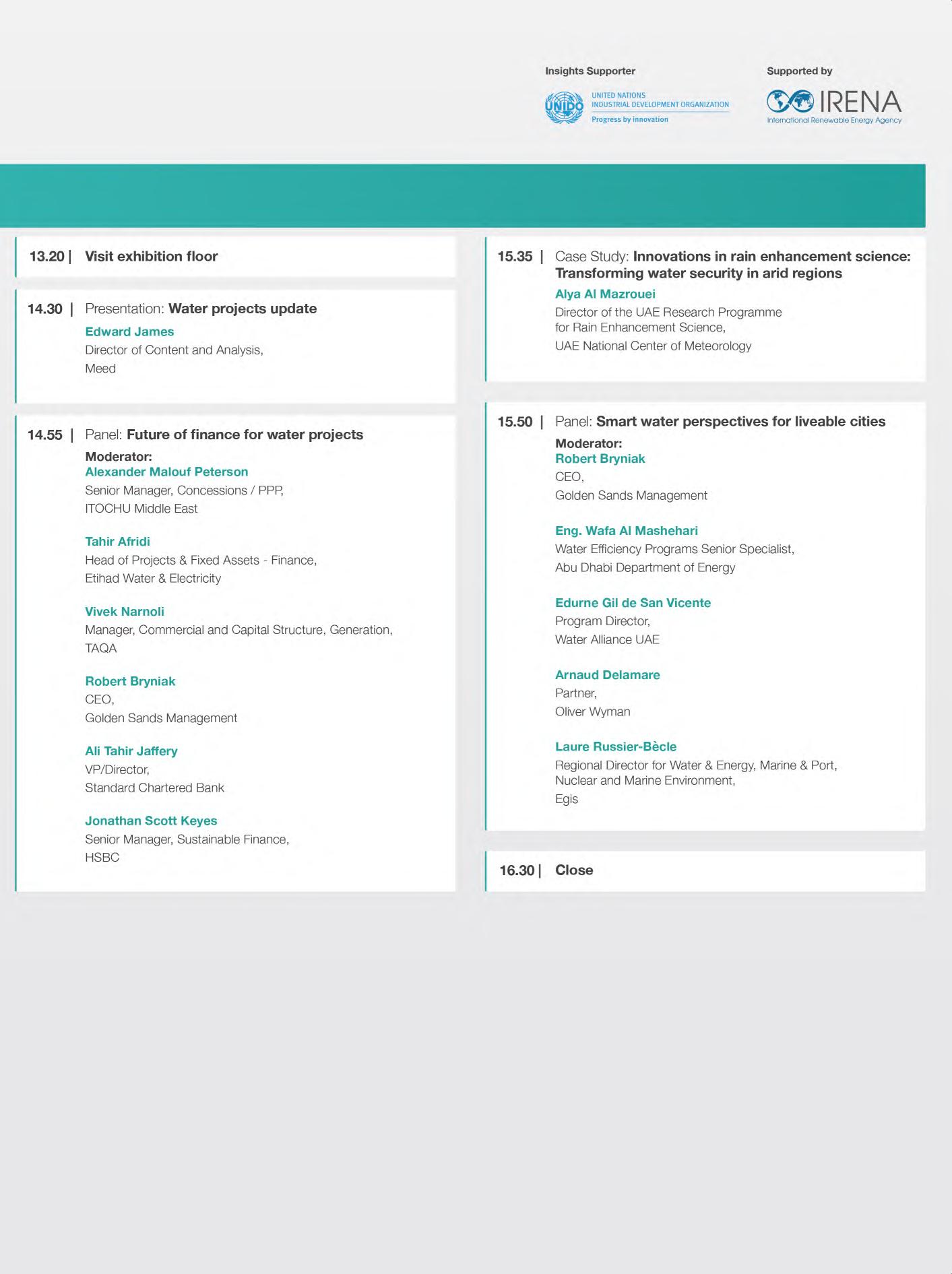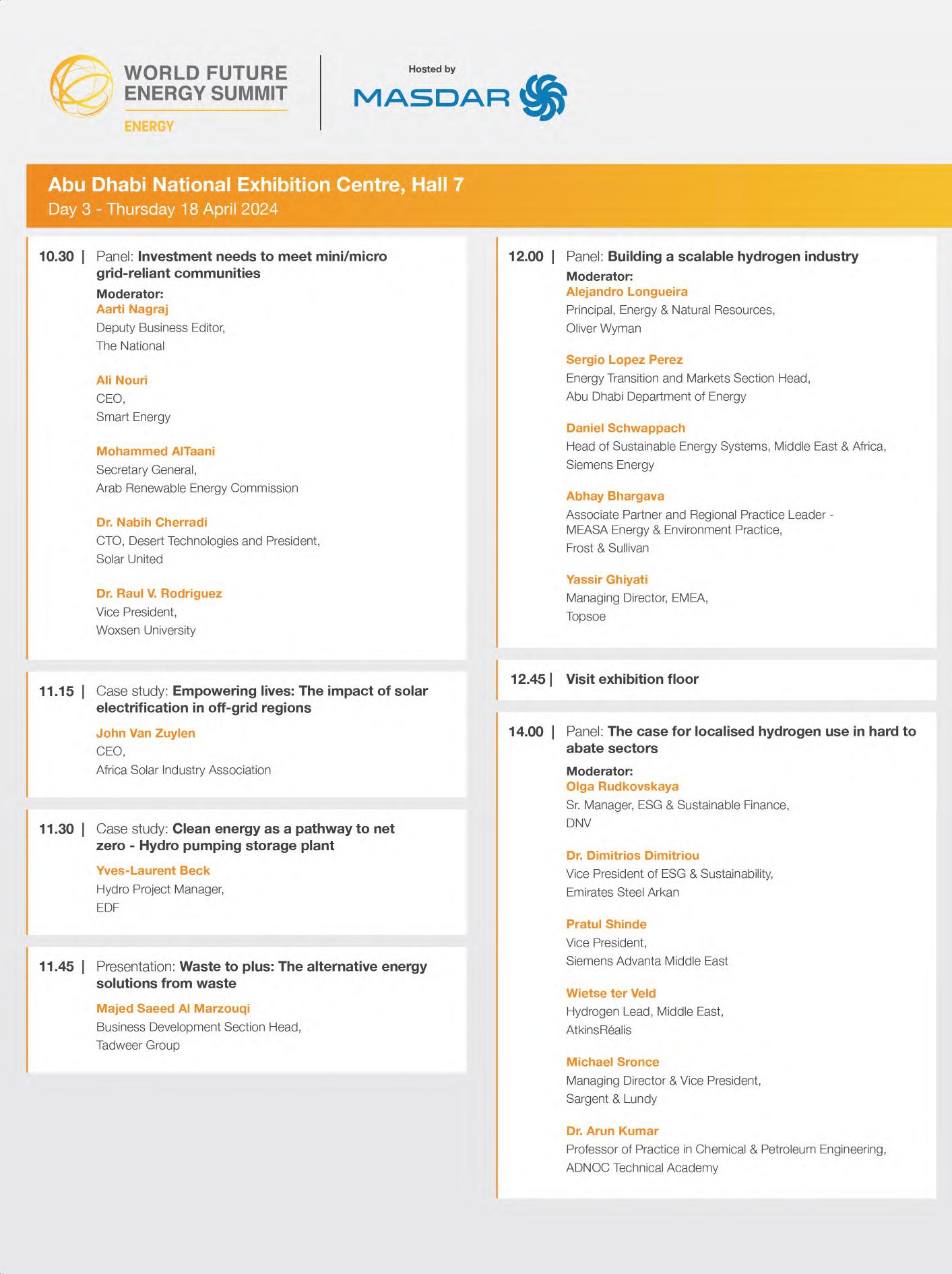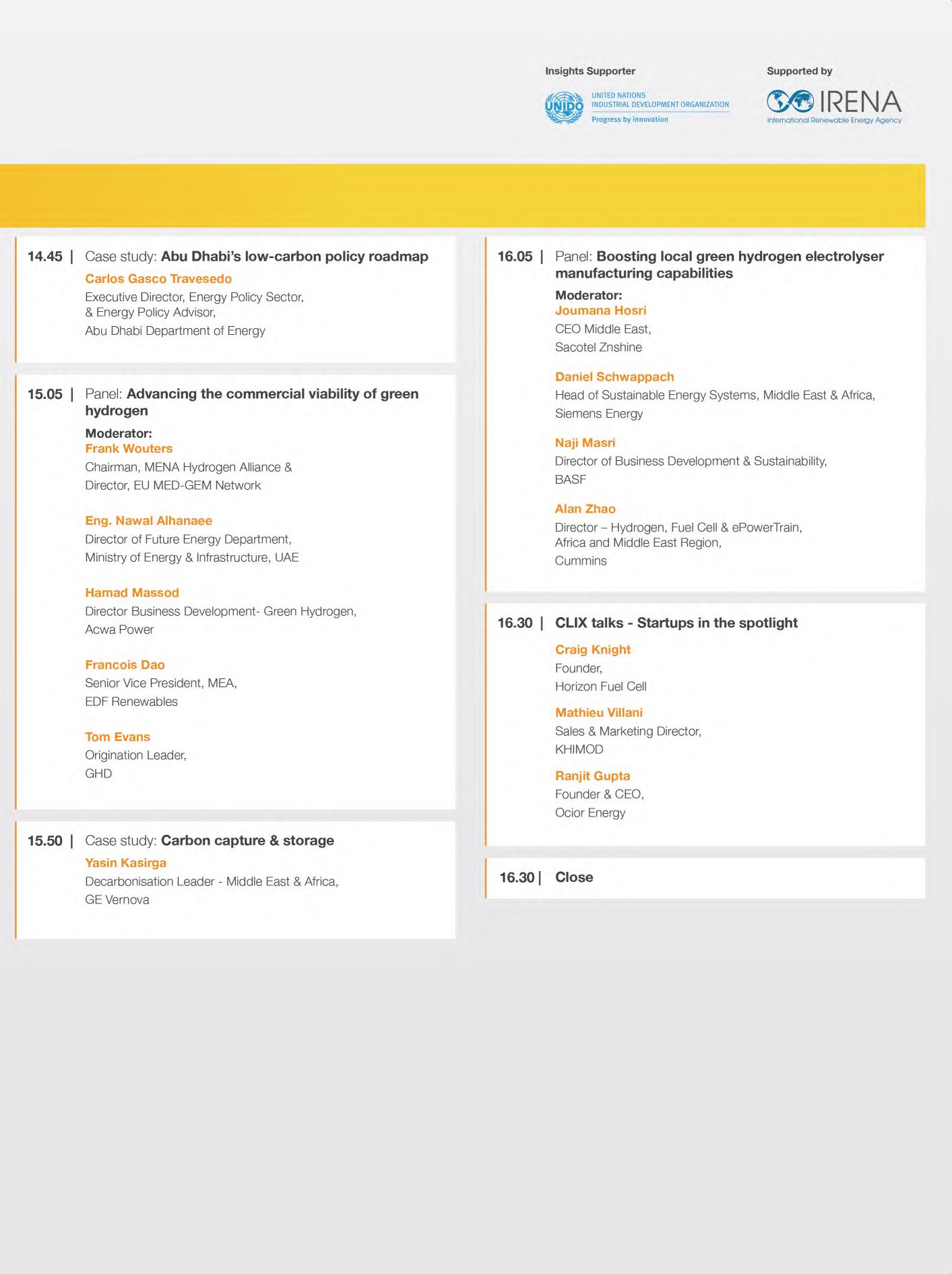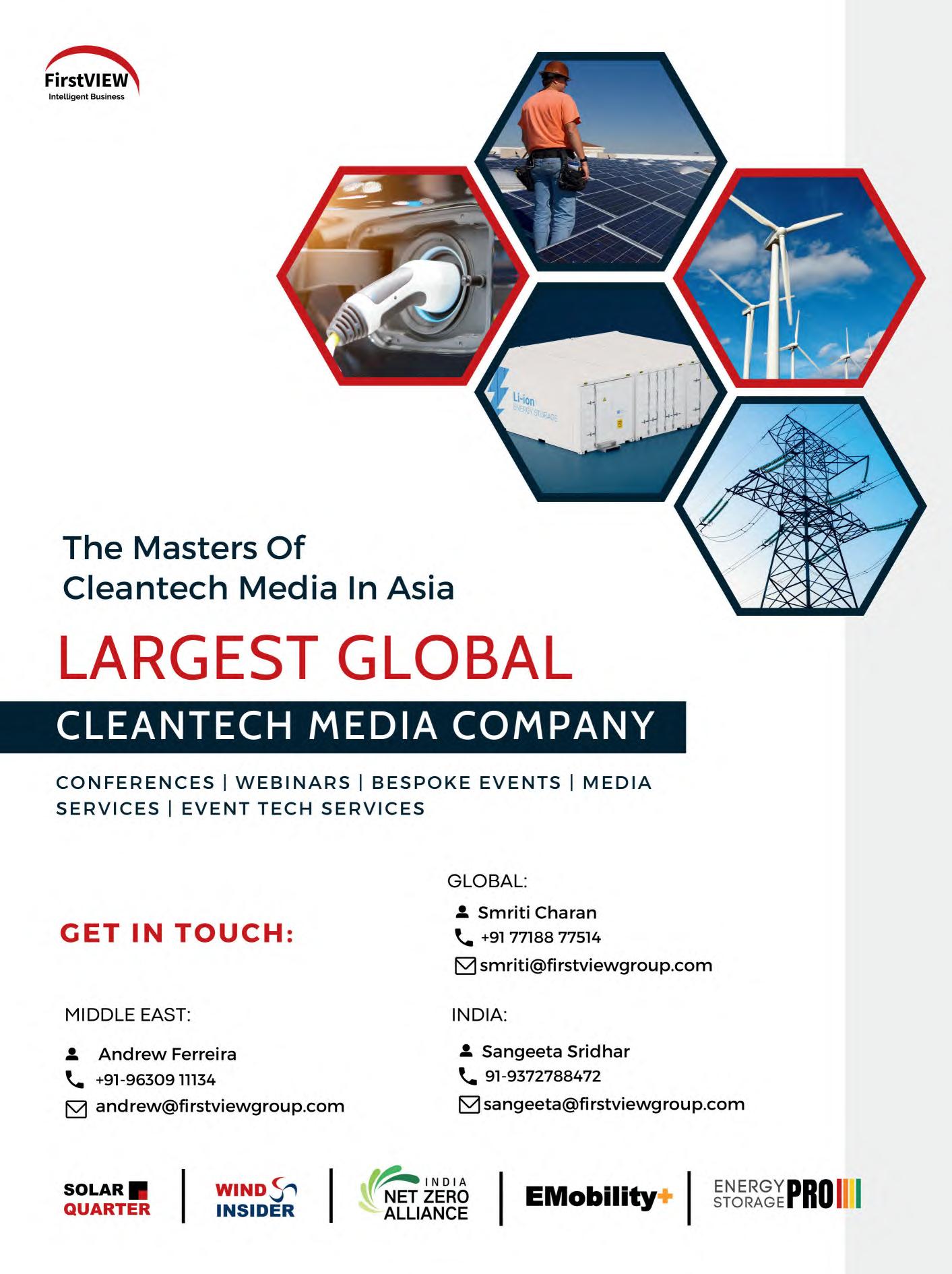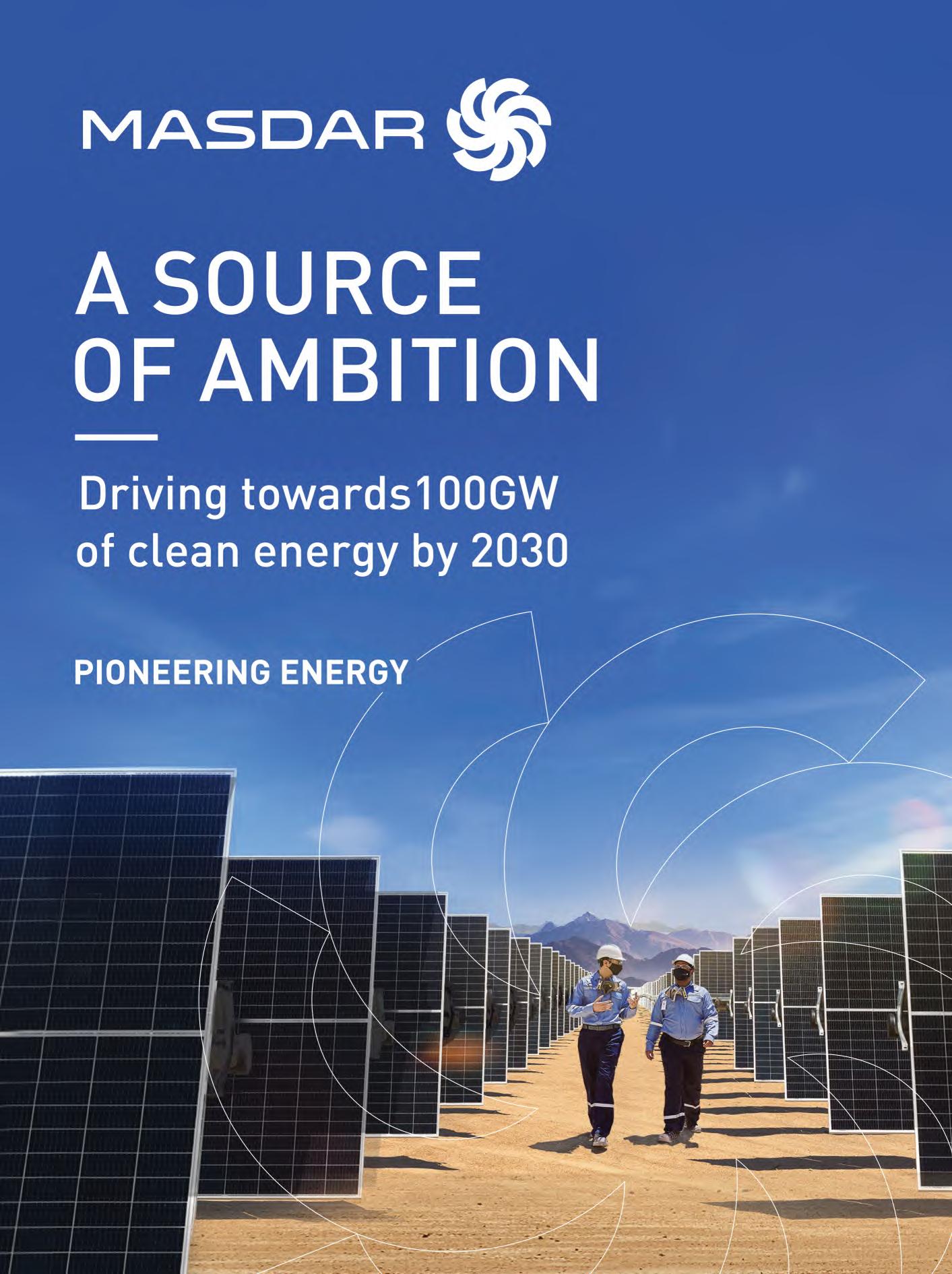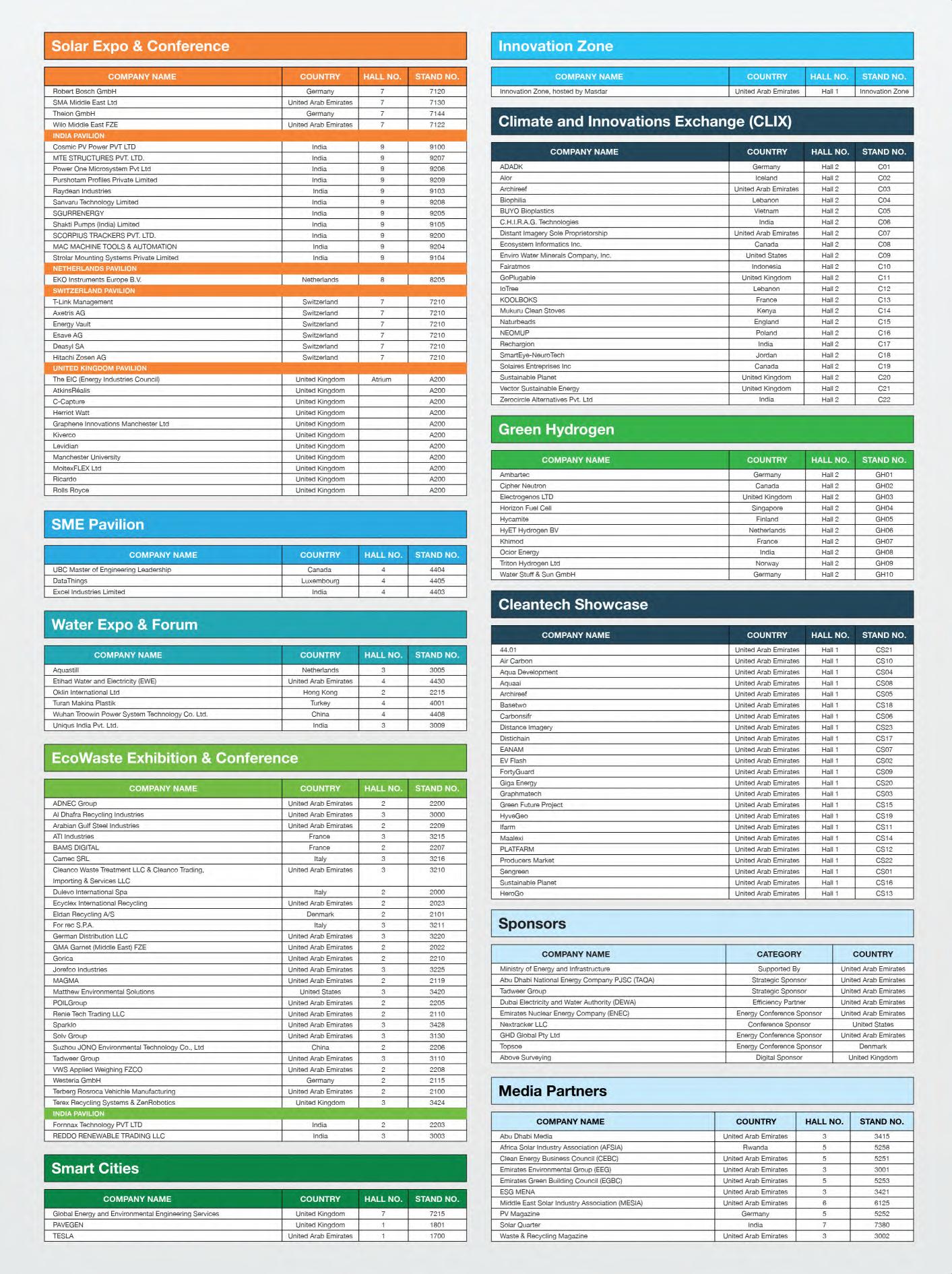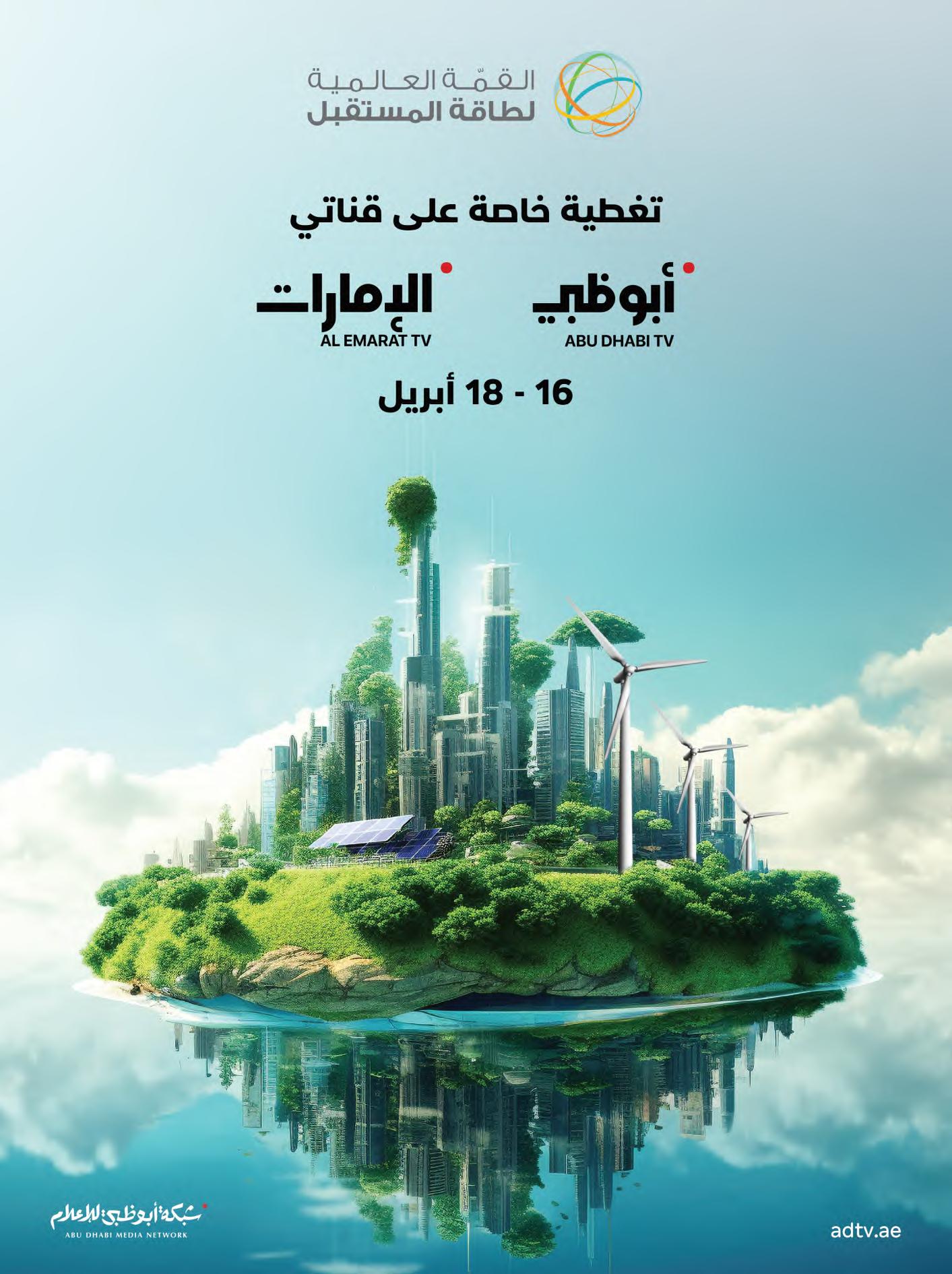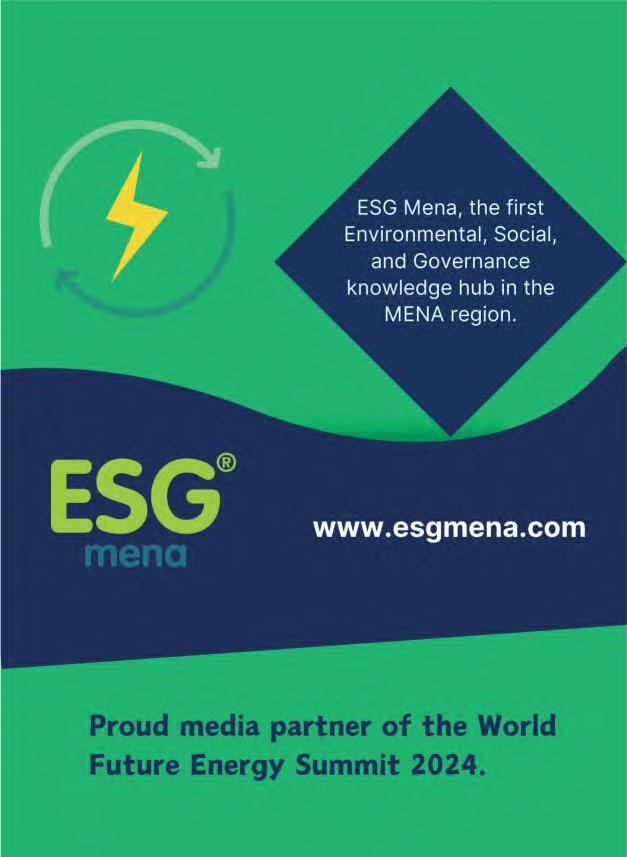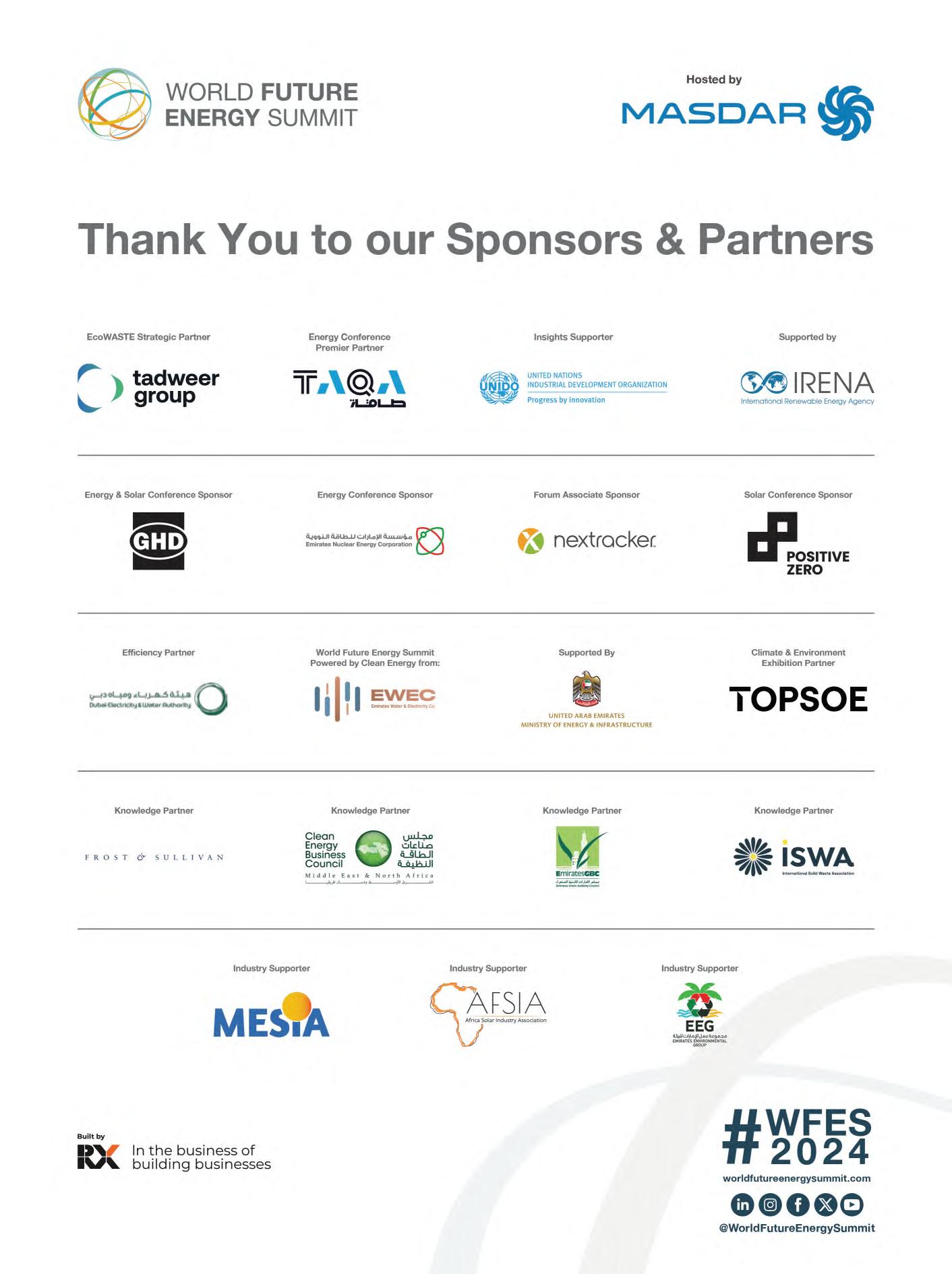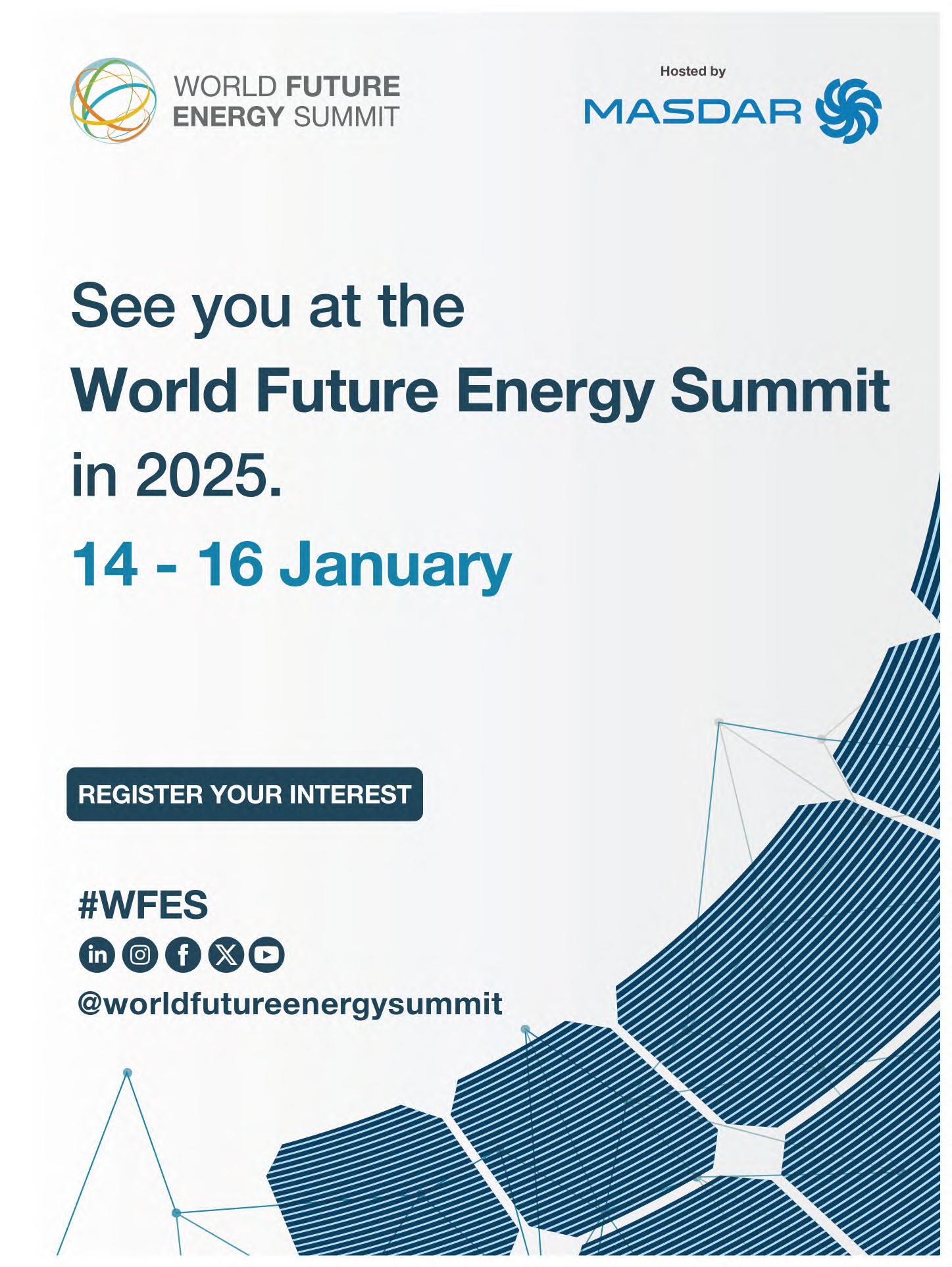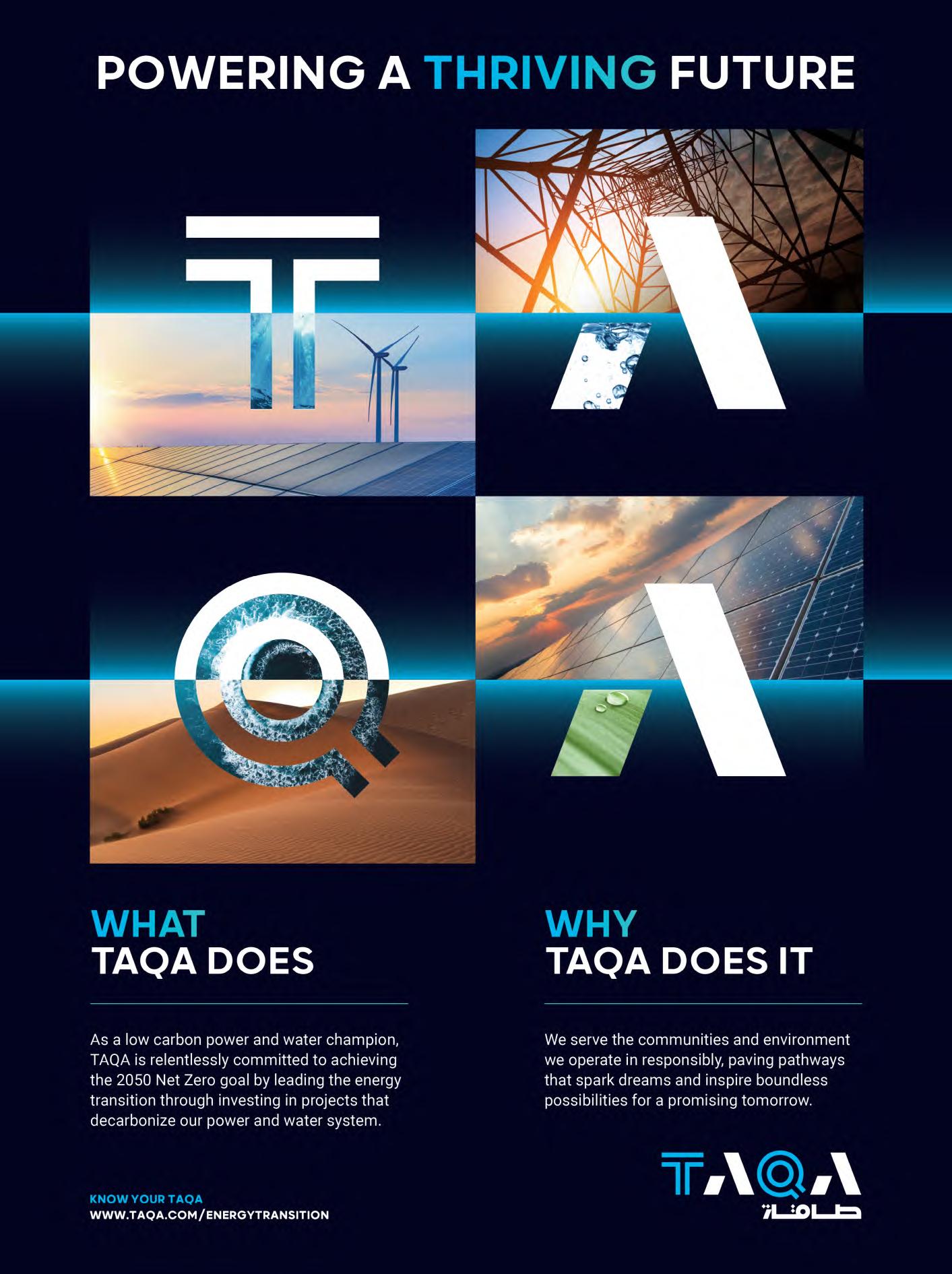DAILY NEWS
DAY 3, 18 APRIL 2024
Today 03
World Future Energy Summit debuts eMobility Forum
The inaugural eMobility Forum at the World Future Energy Summit began with a panel session which explored the issues and challenges around integrating new autonomous transport models into urban design.
“When we launch an autonomous vehicle eprogramme there are many challenges to look at. What operators and what technologies are available locally? You need a good operator to manage the technology and face local challenges,” said Shahid Tanvir, Executive Advisor, Royal Commission for Riyadh City.
Strong communications are key, the panel agreed, between vehicles and the infrastructure.
Finance
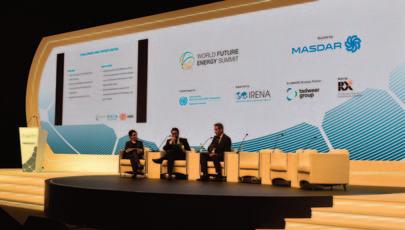
A financial refocus for MENA
David Ramos, HSBC’s Head of Sustainability, was joined by Dr Soundouss Bouhia, Director of Policy & Finance for the UAE Independent Climate Change Accelerators (UICCA) and Jean Morcos, Senior Investment Officer at IFC, at the Green Finance Forum, to launch a new report: ‘Blended Finance in the Middle East & North Africa’.
The report, a collaborative effort between UICCA, HSBC and Convergence, examines MENA’s blended finance landscape (worth US$14.2 billion), leading investors, and regions of high potential. Dr Bouhia said the report hopes to address the fact that “some stakeholders are reluctant to be more innovative. By raising awareness of blended finance, we could change the financial structuring and dynamic in MENA.”
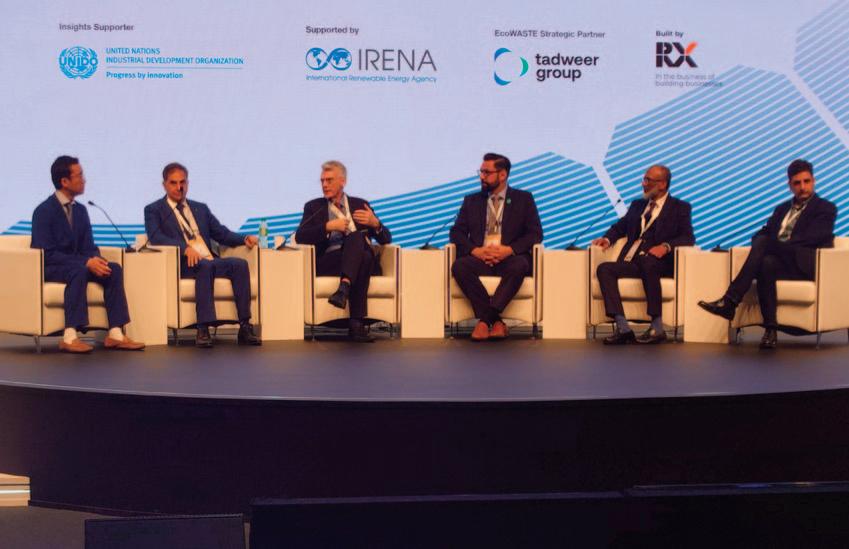
The introductory panel session at the eMobility Forum.
eMobility
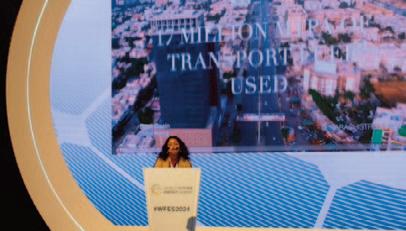
Scaling up electric mobility
At the eMobility Forum, Naveen Ahmed, Advisor and Transaction Coordinator, Private Financing Advisory Network, gave a presentation based on a study commissioned by the Pakistan Private Sector Energy Project, supported by USAID and implemented by PFAN, UNIDO and REEEP. It focused on the indigenisation of the EV value chain in the two- and three-wheeler transport segment in Pakistan.
“You need a good operator to manage the technology and face local challenges.”
Waste

Decarbonising waste industry
Tadweer Group and the UK’s Levidian have joined forces to explore decarbonisation projects of landfill sites around the world through the deployment of Levidian’s LOOP technology, producing millions of tonnes of clean hydrogen and carbon negative graphene. This can be used as a high-quality additive to increase the performance of materials as wide-ranging as concrete, batteries and plastics. Tadweer Group will develop a first-of-its-kind pilot project in Abu Dhabi to be commissioned by the end of 2024.
This mobile system will then be used as part of the programme to develop further decarbonisation projects in the UAE and beyond, with the aim of showcasing the technology as a scalable solution to the world’s waste methane problem.
Organised by
Hosted by EcoWASTE Strategic Partner Insights Supporter Supported by
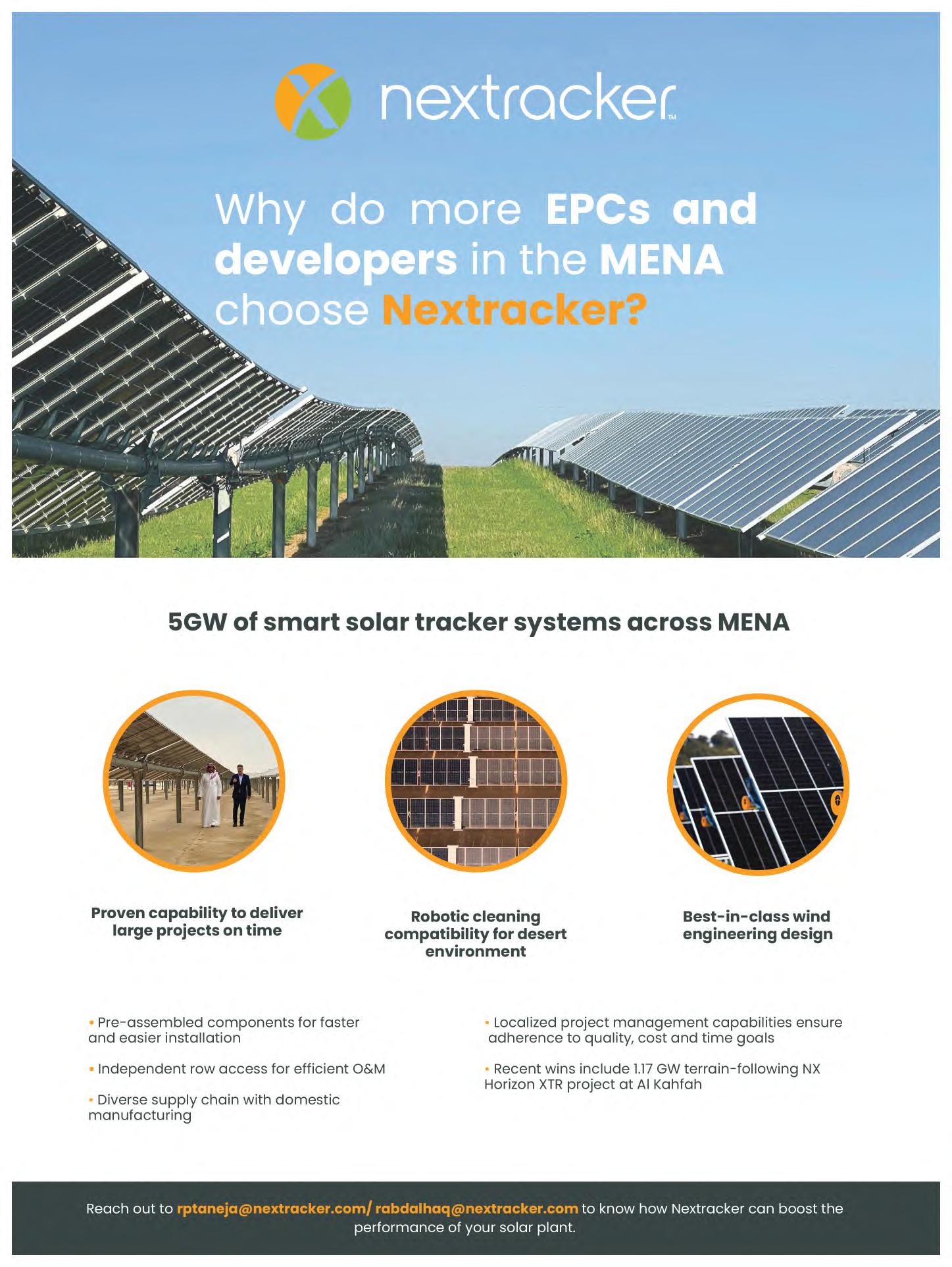

“Sustainable energy and the change we are going through can be abstract and hard to grasp, so brands are using it to get people to care, communicate our message and convey a very simple idea, that every step forward is a step towards the future.”
Laurence Kemball-Cook, CEO of Pavegen
Promising prospects in Middle East hydrogen
How do you view the progress the MENA region has made in advancing hydrogen development?
Thomas Evans, Origination Lead EMEA at GHD: It is evident that the region is capitalising on its advantages in the global hydrogen race, betting big on the low-carbon fuel. The region's abundant natural resources – intense and reliable sunlight, large tracts of empty, flat land and natural gas reserves – contribute to some of the lowest lowcarbon power costs in the world.
These advantages are further strengthened by the region's strategic geographic location and existing infrastructure, such as gas pipelines and ports linking North Africa and Europe, making exporting a viable plan for the future.
Against this backdrop, several countries in the region in recent years have outlined ambitious national hydrogen strategies, notably the UAE’s hydrogen strategy and spearheaded world-first projects. The most ambitious project and indeed one to watch is Saudi Arabia’s NEOM project, which is poised to become the world’s largest commercial-scale green hydrogen production facility. Scheduled to become operational in 2026, this facility will produce an initial 600 tonnes of green hydrogen per day. It is also expected to
potentially save as much as 5 million tonnes of CO2 emissions per year.
How do you view prospects for advancing hydrogen development in the region?
Thomas Evans: The prospects for advancing hydrogen development in the region are extremely promising. Particularly in the Middle East, countries not only have access to abundant natural resources but also possess significant investment capabilities and expertise in attracting international businesses and talent. Combined with economic stability, the region is well positioned as a global leader in lowcarbon hydrogen production and innovation.
Developed in alignment with the UAE’s Centennial 2071 ambition, the UAE's National Hydrogen Strategy provides a comprehensive roadmap for establishing a successful hydrogen economy. A key focus of the strategy is on generating and supporting a domestic hydrogen market. While there may be a temptation to concentrate on production capabilities, understanding and developing domestic demand is crucial. The strategy recognises that although the technology for hydrogen export is still evolving, successful and economically sustainable hydrogen economies should first focus on their domestic markets, with the potential for international exports in the mid to long term.
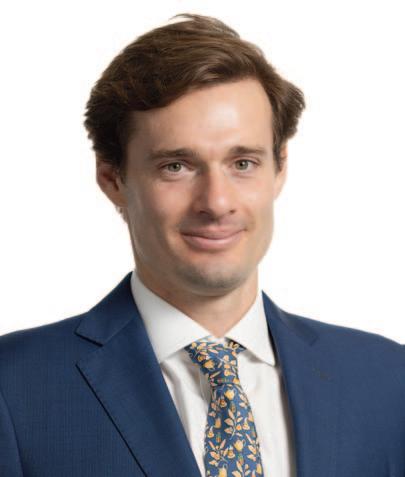
The UAE's strategy also stresses the need for the integration of various hydrogen production technologies. It considers the use of blue hydrogen (derived from natural gas with carbon capture, utilization, and storage (CCUS)), green hydrogen (produced from renewable sources), and other emerging technologies to meet its ambitious targets. A diverse technological approach will be key to advancing hydrogen development.
The indigenisation of the EV value chain in the two- and threewheeler transport segment in Pakistan
At the eMobility Forum, Naveen Ahmed, Advisor and Transaction Coordinator. Private Financing Advisory Network, gave a presentation based on a study commissioned by the Pakistan Private Sector Energy Project, supported by USAID and implemented by PFAN, UNIDO and REEEP. It focused on the indigenisation of the EV value chain in the two- and three-wheeler transport segment in Pakistan, which together account for around 80% of the country’s total vehicular fleet.
“Essentially what the study focuses on is Pakistan as an investment opportunity in the e-mobility sector, especially in the two- and three-wheeler vehicle segment, ie scooties and rickshaws or tuk-tuks, which is where we see total cost of ownership (TCO) parity,” Ahmed explained. “We see an uptake in sales in these segments. In the two wheeler sector, many are commercially used in courier and delivery services. Similarly, the rickshaw or three-wheelers are also dually used for transporting passengers and goods.”

Naveen
Advisor
Transaction Coordinator, Private Financing Advisory Network.
Ahmed explained that despite the higher upfront costs of EVs compared to conventional vehicles, in the two-wheeler and three-wheeler sector, net
savings can be achieved in 6-12 months, because of the high mileage travelled. “The operating costs are lower compared with conventional vehicles, so there is total cost of ownership parity when you compare the total upfront costs of the EV versus the savings that a user experiences over a period of time. That is a big deal, especially in low-income, developing and emerging markets, which are vulnerable to oil price movements and where budgets are strained. It makes economic sense.”
The study outlines investment opportunities in the EV ecosystem generally, and verticals along the entire supply chain, such as material supply, retrofitting, battery manufacturing, EV manufacturing, infrastructure, IT services and mobility as a service.
“We see a billion-dollar opportunity in the twowheeler segment alone, over the next 12-18 months,” Ahmed concluded.
www.worldfutureenergysummit.com 3 DAY 3 | 18 APRIL 2024 DAILY NEWS CLEAN ENERGY: Grid challenges 09
Thomas Evans, Origination Lead EMEA at GHD.
Ahmed,
and

“In the space of climate change, if there is something that you are interested in and something that drives you and motivates you, I don't think there is anything you can't learn.”
Wedad Al Hassan, Deputy Director, Partnerships, COP28
JinenU Solar’s debut brings new mode of photovoltaic module to the Middle East
Customised solar module manufacturing provider, JinenU Solar made its debut at the World Future Energy Summit and Exhibition (WFES), held on 16 April in the Abu Dhabi National Exhibition Centre (ADNEC).
With its debut, the company not only brings a dazzling new mode of photovoltaic module to the Middle East region, but also demonstrates customised manufacturing modules tailored to the characteristics of the Middle East market.
In terms of performance, the modules meet the demand for efficient energy conversion. Moreover, taking into account the unique climate and environmental factors of the region, these modules are designed to be resistant to high temperatures and sandstorms. This in turn helps assist customers in maximising energy utilisation and enhancing economic benefits.
With its unique customised manufacturing mode
Standing up for sustainability
and high-quality and high-efficiency customised products, the company attracted a lot of attention from customers in the Middle East market on the first day of exhibition. Together with clients in the Middle East region, the company explores new opportunities for green cooperation, aiming to create greater value for customers and the market.
The debut of JinenU Solar's customised manufacturing mode at international exhibitions not only showcases the strength of JinenU Solar's customisation capabilities to a wider audience, but also provides clients with a wealth of choices of efficient and stable customised products.
In the future, JinenU Solar plans to continue upholding its positioning of serving the entire industry and customising for the whole world, providing high-quality customised products and services for customers in the Middle East market, and offering customised manufacturing services to more regions.
SMART CITIES:
Achieving net-zero in the built environment by 2050

JinenU Solar is committed to providing global customers with customised production and manufacturing services for photovoltaic products.
Bosch PEM electrolysis stack on display at WFES 2024
The final day of the World Future Energy Summit was marked by a celebration over at the EcoWASTE Conference, with Tadweer presenting its ‘Sustainable Stands Awards’. The competition was delivered in order to encourage leading companies and partners to think sustainably about their products, with the judges assessing elements of stands which were creatively made with recycled materials and how they were displayed at the exhibition. The organisers acknowledged the incredible effort and hard work that had clearly been put in and that has helped demonstrate the importance of a greener, healthier tomorrow.
Following this introduction to the competition, the winners were duly announced with third place being awarded to Ecolounge, and second place being claimed by Masdar City. While both were rightly commemorated for their efforts, it was Aldar Properties that took the first place prize.
Salwa Al Maflahi, Director of Sustainability and CSR at Aldar Properties, commented, “It is really exciting to get this recognition and it encourages us to do better in future exhibitions and also learn from each of the other winners.”

Along the entire hydrogen value chain, Bosch is developing technologies for the production, compression, storage, and use of hydrogen.
At this year’s World Future Energy Summit (WFES), the company is providing general insights into the hydrogen portfolio of products and services, with a specific focus on the Bosch PEM electrolysis stack.
Comprising more than 100 electrolysis cells that utilise electricity to split water into oxygen and hydrogen, the stack is designed for an output of 1.25 MW, which is equivalent to the production of 23 Kg of hydrogen per hour.
The Bosch electrolysis stack is suitable for use in smaller-scale plants all the way up to large gigawatt-scale plants. It is expected to be marketready from 2025, with first pilot projects with customers being in preparation for this year.
In addition, Bosch is planning to combine the electrolyser stack with a control unit, power electronics, and various sensors to create a ‘smart electrolysis module.’ These elements are designed to be compatible, save space and optimise systems efficiency, reliability, installation, and setup.
DAY 3 | 18 APRIL 2024 DAILY NEWS World Future Energy Summit | Daily News 4
13
Aldar Properties were awarded first prize in the Sustainable Stands Awards.

“We are gathering here to share a common goal of advancing a just and sustainable transition towards clean energy. The transition, as we know it, must allow economies to grow, while resulting in curbing emissions and upholding energy security.”
H.E. Eng Sharif Al Olama, Undersecretary for Energy and Petroleum Affairs, Ministry of Energy & Infrastructure.
AGRICULTURE: Smart irrigation practices
A suite of smart and sustainable tech projects from Dubai Electricity & Water Authority
Dubai Electricity & Water Authority (DEWA) has brought an innovative suite of key projects and smart initiatives to this year’s World Future Energy Summit, capturing its forward-thinking vision and alignment with the Dubai Clean Energy Strategy 2050 among other strategic goals.
A sustainable spotlight has been shone on the unique technologies utilised in the fourth phase of the Mohammed bin Rashid Al Maktoum Solar Park, the largest single-site solar park in the world using the independent power producer mode. Boasting a current production capacity of 2,627 MW, further capacity enhancements are set to bolster this to 5,000 MW by the end of the decade. Largely supplementing that near-doubling of capacity by 2030 is the park’s sixth phase, in partnership with Masdar, which will utilise the latest solar bifacial technologies with single-axis tracking to bolster capacity by 1,800 MW when it comes online.
Equally ambitious is the Sea Water Reverse Osmosis (SWRO) desalination plant, fuelled by solar power at the Jebel Ali Power Plant and Water Desalination project. This AED897 million plant has a daily production capacity of 40 million imperial gallons, supported by efficiency recovery devices which significantly reduce power consumption in the high-pressure pump.
With Green Hydrogen dominating sections of the discourse at World Future Energy Summit 2024,
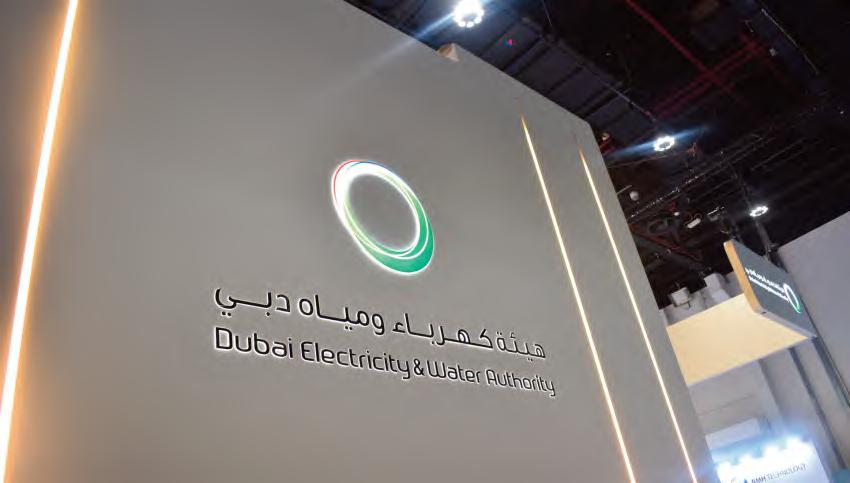
The Dubai Electricity & Water Authority’s projects span solar, green hydrogen, desalination and electric vehicles, many of which are on full show during World Future Energy Summit 2024.
DEWA brings its first-of-its-kind project for the region, in cooperation with Expo 2020 Dubai and Siemens Energy. Adjacent to the Mohammed bin Rashid Al Maktoum Solar park, the plant produces hydrogen using solar energy, and accommodates future developments, applications and testing platforms for various hydrogen use cases including energy production and mobility.
Through its EV Green Charger initiative, DEWA provided over 23,000 MWh of electricity for charging electric vehicles in Dubai in the eight-year period between 2015 and the end of 2023, representing a cumulative vehicle distance of 117 million kilometres. The technology behind this initiative is on full show, including one of almost 400 charging stations installed across Dubai.
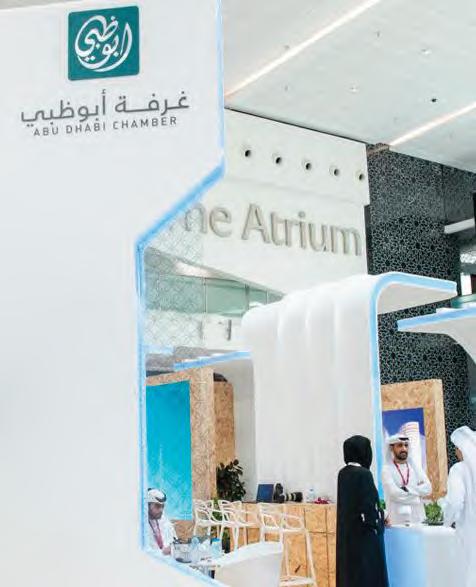
ADCCI brings tomorrow’s technical energy solutions to the show floor
The Abu Dhabi Chamber of Commerce and Industry (ADCCI) pavilion at WFES 2024 includes nine national and local companies specialising in several activities related to energy and its technical solutions, including Dunes & Waves, Yellow, EFATE - Electronic Waste Management, Al Byout AlTiniya (P&M), Verofax, SOLABOLIC, Thamara, and Infinite Roots.
Ahmed Khalifa Al Qubaisi, CEO of ADCCI, said, “Our participation in the summit aligns with our enduring dedication to driving both national and global trends aimed at promoting the launch of sustainability initiatives to advance the comprehensive development process witnessed in the UAE, as well as encouraging businesses to contribute directly to addressing the repercussions of climate change, leading to building a more sustainable future for future generations.

“The Abu Dhabi Chamber is participating in this event with a special pavilion that includes a number of companies specialising in the energy and sustainability sector. The participation of these companies will contribute to enhancing the exchange of experiences, highlighting best practices in the sector, and presenting the latest sustainable solutions and innovations.”
www.worldfutureenergysummit.com 5 DAY 3 | 18 APRIL 2024 DAILY NEWS
10
Nine national companies are on show at the ADCCI pavilion.


"COP28 pushed a different narrative of investment opportunity rather than a narrative of reparation."
Elias El Mrabet, Climate Finance Director at COP28
Keeping up with hydrogen
With so much expectation resting on the emerging green hydrogen sector, the World Future Energy Summit provided a special platform to the innovative pioneers that are working at the forefront of this blossoming market. At the Green Hydrogen Innovation Hub, returning for a second year following its debut in 2023, attendees were able to rub shoulders with these innovators and learn about the revolutionary technology and services they are delivering.
The companies on display included the likes of Triton Hydrogen. At its booth, visitors were able to discover more about Tritonex, a hydrogen barrier coating system, described by the company as the ‘final and missing piece’ of the puzzle to allow the storage and transport of hydrogen gas without leakage and embrittlement.
Elsewhere, Horizon Fuel Cell Technologies was proving to industry professionals why it has earned the title of a global hydrogen technology leader. Spanning hydrogen production and power generation, the company has core business operations in three principle fields of fuel cells, electrolysers and hydrogen equipment. Among the offering being showcased was the VLS III Series (part of the company’s Fuel Cell Stack range), a solution that provides industry-leading peak power from a single stack, exceeding 250 kW, with volumetric power density up to 4.7 kW/L.
Also to be found was KHIMOD, a provider of Heat Exchanger-Reactors as well as delivering turnkey systems and related services for the production of
AGENDA: Solar and clean energy

Mathieu Villani, Sales and Marketing Director for KHIMOD, speaking to a potential client.
e-methane, e-methanol and e-fuels, allowing H2 transformation and CO2 reuse and valorisation. On the stand was Mathieu Villani, Sales and Marketing Director at the company, who explained that the solution is able to “reduce the carbon footprint of industry by converting carbon emissions into valuable fuels.” While it has largely operated in
Europe so far, it is pursuing development in the likes of US, South Korea and Japan and was present at the Summit this year to explore opportunities in the Middle East. According to Villani, it had garnered much interest at the Hub and he was able “to speak with potential partners for the possible implementation of units based on our technology.”
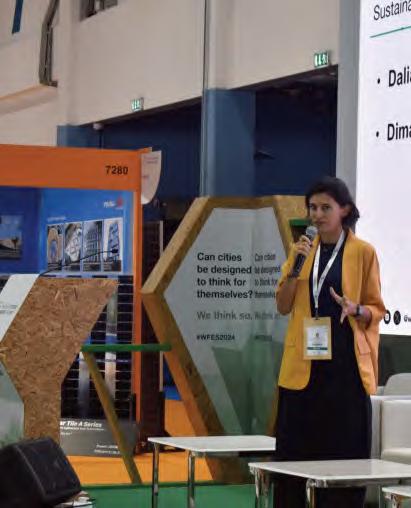
Revising the human-environment relationship
On the final day of the Summit, the Smart Cities Conference burst into life with an agenda covering everything from rethinking asset management for sustainable cities to questioning whether a city can be smart without open data?
At the opening, a presentation by Chris Wan, Associate Director of Sustainability and CSR of Masdar City, on the progress the urban community is making in achieving net zero, was followed by a discussion between Dalia Hamati, Founder and Principal Architect, studioDA, and Dima Al Srouri, Founder and Director, Biospheric City Lab, who delved into the topic of sustainable land use and the importance of balancing human demands with environmental preservation.

“This is a relatively recent thing,” explained Hamati. “For thousands of years the human species had no word for the environment because they were at one with it, we had no way to other ourselves from it and therefore create this need for balancing.” However, this relationship has changed and one way to rebalance the equation that Hamati explored was through regenerative design. “This touches on this mindset. What if, instead of sustaining the status quo – which is what sustainability asks us to do – we are active and positive contributors to the environment in the way that we have done for hundreds of years.”
www.worldfutureenergysummit.com 7 DAY 3 | 18 APRIL 2024 DAILY NEWS
30
Dalia Hamati engaging with the audience at the Conference.
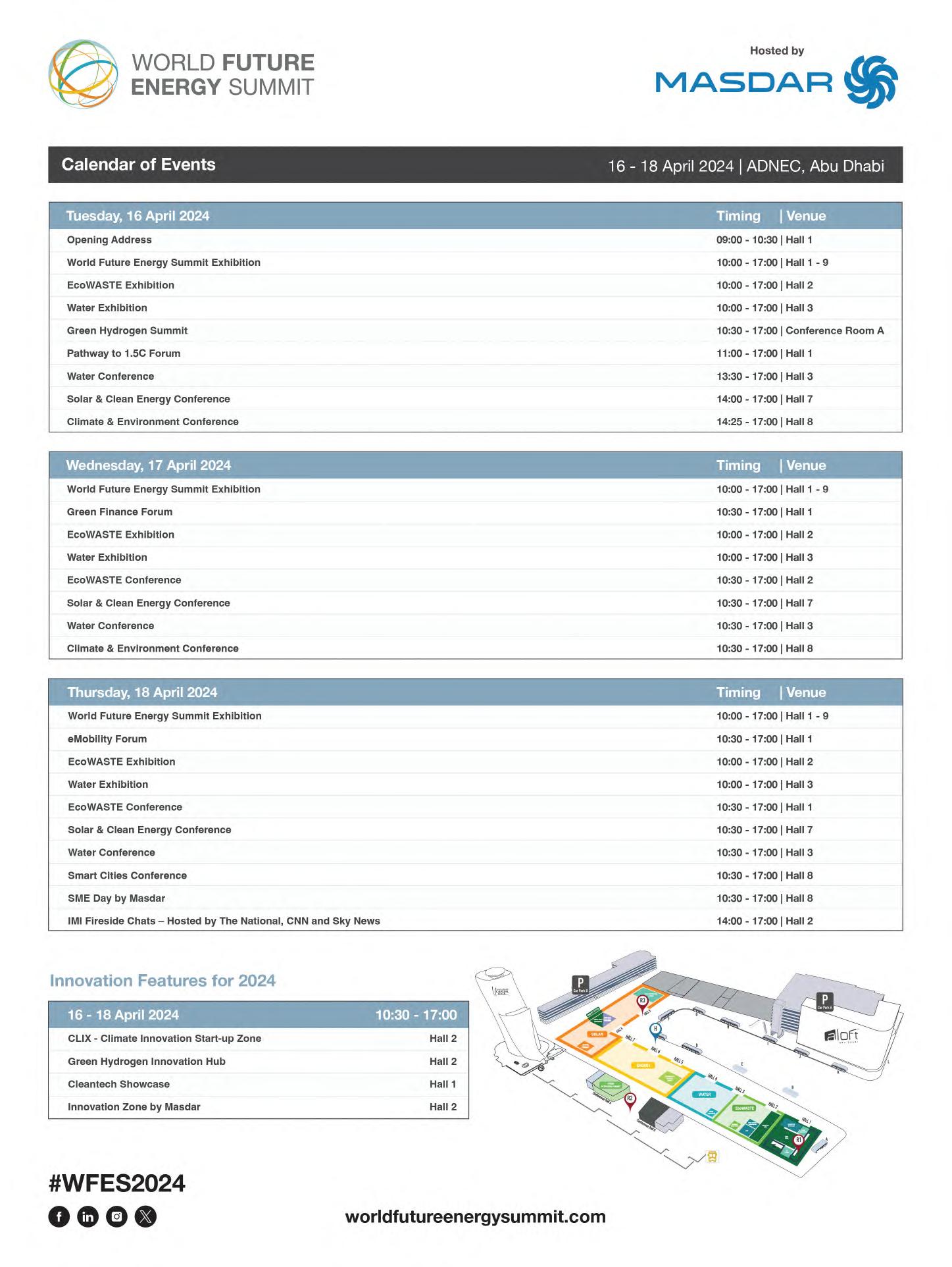

“Financial sustainability is crucial for accelerating the energy transition and achieving global renewable energy targets.”
Francois-Xavier Boul, Managing Director of Renewables MENA, Engie
The need for
efficient and updated power grids
Renewable energy developments continue at break-neck speed, with US$644bn to be spent on new capacity in 2024, but outdated and inadequate power grids could prove to be a significant stumbling block to the energy transition,
says Rystad Energy.
In that scenario, an additional 18 million kilometres of grid network would be needed to keep pace with the electrification underway across cities and countries, including new renewable energy capacity and the rapid adoption of electric vehicles. This would take the total length of all power grids worldwide to 104mn kilometres in 2030, expanding to 140mn kilometres in 2050 – almost the same distance from Earth to the sun. The immediate expansion by 18mn kilometres would necessitate nearly 30mn tonnes of copper, a commodity already in short supply.
Rystad Energy predicts that global grid investments will reach US$374bn this year.
Image source: Canva
CALENDAR: What’s on at the show
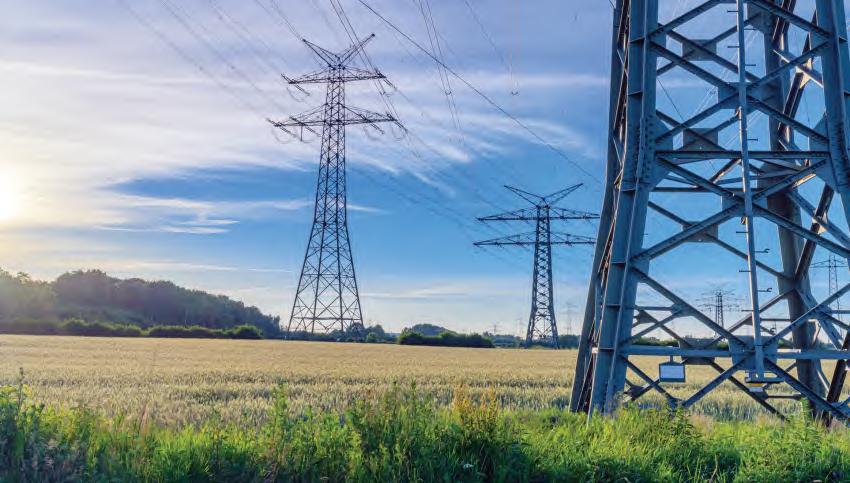
Growing global power demand is the main factor driving the need for grid enhancements. This rise is driven by population expansion, industrialisation and urbanisation in developing countries, and efforts to mitigate climate change through electrification. Cybersecurity, geopolitics and the increasing priority for securing reliable national energy supply also contribute to the need. Yet, inefficient regulatory frameworks could significantly delay grid developments and, in turn, the energy transition.
The rapid expansion of the power grid will require vast volumes of raw materials, especially copper and aluminium. Copper is primarily used as the conductor in underground distribution,
Power grids will be both an enabler and an obstacle to the energy transition. Mature grids have enabled the rapid expansion in solar and wind capacity seen in recent years, but many national grids are now near or at the point where further connections cannot be made without upgrading or expanding them. Annual investment levels must increase if the current trend of renewable energy buildout is to continue.
Edvard Christoffersen Senior Analyst at Rystad Energy
transmission and subsea cables, while overhead lines use aluminium. Although aluminium is predominantly used in overhead lines, it can be substituted as a conductor in underground lines. Demand for copper and aluminium is expected to surge by almost 40% by the end of the decade, but grids are not the main driver. They are also vital to myriad other applications within the construction, transportation, renewables and consumer products industries. Grids only account for roughly 14% of copper demand globally, or about four million tonnes in 2024.
Lengthening the network is necessary to support intermittent and remote renewable power generation and to connect new industrial, commercial and residential areas, but alternatives to meet growing power demand also exist. Implementation of large-scale battery storage can address intermittency issues associated with renewables and allow for higher average grid loads, reducing the need for new lines. Overhauls and upgrades of the existing grid can increase the capacity per kilometre and digitalisation can free up capacity by solving flexibility issues. At the same time, distributed energy sources such as rooftop solar can reduce the need for new lines. What is clear is that the world’s current grid infrastructure does not meet the demands of the future energy system.
Tortuous permitting processes are already causing bottlenecks in many countries, including the US and the UK. Adopting large-scale battery storage solutions and grid digitalisation can address some grid intensity issues, but the electrification of society will spark greater attention and efforts to streamline regulatory frameworks and encourage investments so grids can become an enhancer rather than an inhibitor of the energy transition.
www.worldfutureenergysummit.com 9 DAY 3 | 18 APRIL 2024 DAILY NEWS
08

“Masdar City will continue its journey to reduce its carbon footprint in water, waste, and construction.”
Chris Wan, Associate Director, Sustainability and CSR, Masdar City
Irrigating smarter for a sustainable tomorrow
Incorporating 4IR
technologies into
smart irrigation practices can significantly boost agricultural productivity and food security, writes Madhuri Ramesh.
While agriculture in developed countries is largely influenced by advancements in technology, the same is however not the case in developing countries such as Nigeria, where food shortages are a common occurrence. This is often a direct consequence of farmers' reluctance to adapt to emerging agricultural technologies. Moreover, agriculture consumes a majority of the world's freshwater supply, a situation that is further exacerbated by the obsolete farming methods used by farmers in sub-Saharan Africa, as well as their heavy reliance on manually-operated irrigation methods.
A recent study1 evaluated the potential of Fourth Industrial Revolution (4IR) technologies in smart irrigation and the prospects of their use in subSaharan Africa. From the study, it was evident that incorporating 4IR technologies into smart irrigation practices could significantly enhance water use efficiency, optimise crop yields, and contribute to sustainable agricultural practices. All this would eventually boost agricultural productivity and food security, in addition to empowering smallholder farmers and rural communities.
Automated smart irrigation systems however face numerous challenges, particularly during the transfer of data to the server. A study published in October last year2 adopted a prototype approach that would efficiently break down the many steps required to maximise smart agricultural irrigation

into linear, sequential stages, where the success of each step relies on the success of the preceding one and each phase is associated with a certain goal.
Acknowledging the need to boost the adoption of agricultural technologies, and innovate existing technologies, a number of African universities such as the Veritas University in Abuja have been regularly organising debates, challenges and competitions to encourage young tech enthusiasts to play a role in shaping the agricultural landscape
After intense competition and rigorous evaluation across various stages, our talented students and dedicated faculty from the Software Engineering Lab have achieved an outstanding feat.
Dr Emmanuel Mkpojiogu Head of Department of Software Engineering of Veritas University
of the country.
On 9 February, Veritas University emerged as a winner of the third edition of the African Telecommunication Union (ATU) Africa Innovation Challenge, held in Nairobi, Kenya. Veritas University’s Software Engineering Lab won the competition with its innovative initiative focusing on providing hands-on learning experiences for young innovators. “After intense competition and rigorous evaluation across various stages, our talented students and dedicated faculty members from the Software Engineering Lab have achieved an outstanding feat,” said Head of Department of Software Engineering of Veritas University, Dr Emmanuel Mkpojiogu.
Among the numerous innovations catalysed, one notable outcome includes the development of Smart Irrigation Systems, aimed at enhancing agricultural productivity and mitigating food shortages. The university was awarded a US$20,000 cash grant and currently stands as the African representative at the World Universities Debating Championship this year.
1https://www.sciencedirect.com/science/article/pi i/S2772375524000170#sec0032
2https://www.scirp.org/journal/paperinformation? paperid=128551
DAY 3 | 18 APRIL 2024 DAILY NEWS World Future Energy Summit | Daily News 10
11
CLIMATE: Reducing methane emissions
Integrating 4IR technologies into irrigation practices could bring significant benefits.

“In a time when countries are proactively moving toward more sustainable practices, particularly in light of the recent COP28 climate summit’s plan for transitioning from fossil fuels, East Africa is undoubtedly a shining beacon.”
Carol Koech, Strategy Director, Sustainability & Thought Leadership – Schneider Electric International Operations
Driving down methane emissions
Efforts to reduce methane emissions have built up a head of steam, catalysed by pledges at COP28 as well as new policies and regulations.
Methane is a potent greenhouse gas. Methane from fossil fuel operations, agriculture and other industries is responsible for around 30% of global warming, with the oil and gas industry estimated to account for up to a quarter of global emissions.
The IEA's latest edition of its Global Methane Tracker finds that the production and use of fossil fuels resulted in close to 120 million tonnes of methane emissions in 2023, up slightly from the 2022 total. Cutting these emissions is therefore critical.
150 countries have now signed the Global Methane Pledge to cut their collective methane emissions by at least 30% from 2020 levels by 2030. More than 50 oil and gas companies signed the Oil & Gas Decarbonisation Charter at COP28, which includes a pledge to reduce methane emissions to near zero by 2030.
Nearly 200 governments agreed at COP28 to “substantially” reduce methane emissions by 2030, while regulatory initiatives have been announced by Canada, the European Union and the USA. In December, a new initiative was launched by EDF, Bloomberg Philanthropies, the International Energy Agency, RMI and the UN Environment
State-of-the-art satellites monitoring methane leaks are making it easier to address emissions.
EXHIBITOR LIST: Who’s at the show

Programme’s International Methane Emission Observatory to provide transparency and accountability frameworks to help track and drive methane emission reductions from the oil and gas industry.
If all methane pledges made by countries and companies to date are implemented in full and on time, methane emissions from fossil fuels could be cut by 50% by 2030, according to the IEA. However, it points out that most pledges are not yet backed up by plans for implementation.
The lack of reliable methane data is one of the main challenges in curbing methane emissions, according to energy consultancy Rystad Energy. “Reducing methane emissions is generally a more low-hanging fruit than cutting emissions of carbon dioxide, and therefore has the most promising potential for the energy sector in the short and
A 75% cut in methane emissions from fossil fuels by 2030 is imperative to stop the planet from warming to a dangerous level.
Fatih Birol IEA Executive Director
medium term – provided the emissions are detected,” said Magnus Kjemphol Lohne, Senior Vice President of Global Emissions Research at Rystad Energy. “Scarce and low-quality methane data is one of the key challenges to curbing methane emissions.”
A growing number of state-of-the-art satellites monitoring methane leaks, such as the Environmental Defense Fund’s recently launched MethaneSAT, is making it easier to identify and address methane emissions.
MethaneSAT measures changes in methane concentrations as small as three parts per billion, focusing initially on oil and gas operations. It can detect and quantify small emissions over wide areas that other satellites cannot see, and can also pinpoint large emissions from single sources, to provide a complete picture of the methane problem.
In addition to identifying emission sources and rates for a given region, MethaneSAT will enable emission loss rates to be compared across major oil and gas regions worldwide and performance over time. Specially-developed analytics will trace those emissions back to their sources within those target regions.
“A 75% cut in methane emissions from fossil fuels by 2030 is imperative to stop the planet from warming to a dangerous level. I am encouraged by the momentum we’ve seen in recent months, which our analysis shows could make an enormous and immediate difference in the world’s fight against climate change,” IEA Executive Director Fatih Birol said.
www.worldfutureenergysummit.com 11 DAY 3 | 18 APRIL 2024 DAILY NEWS
34
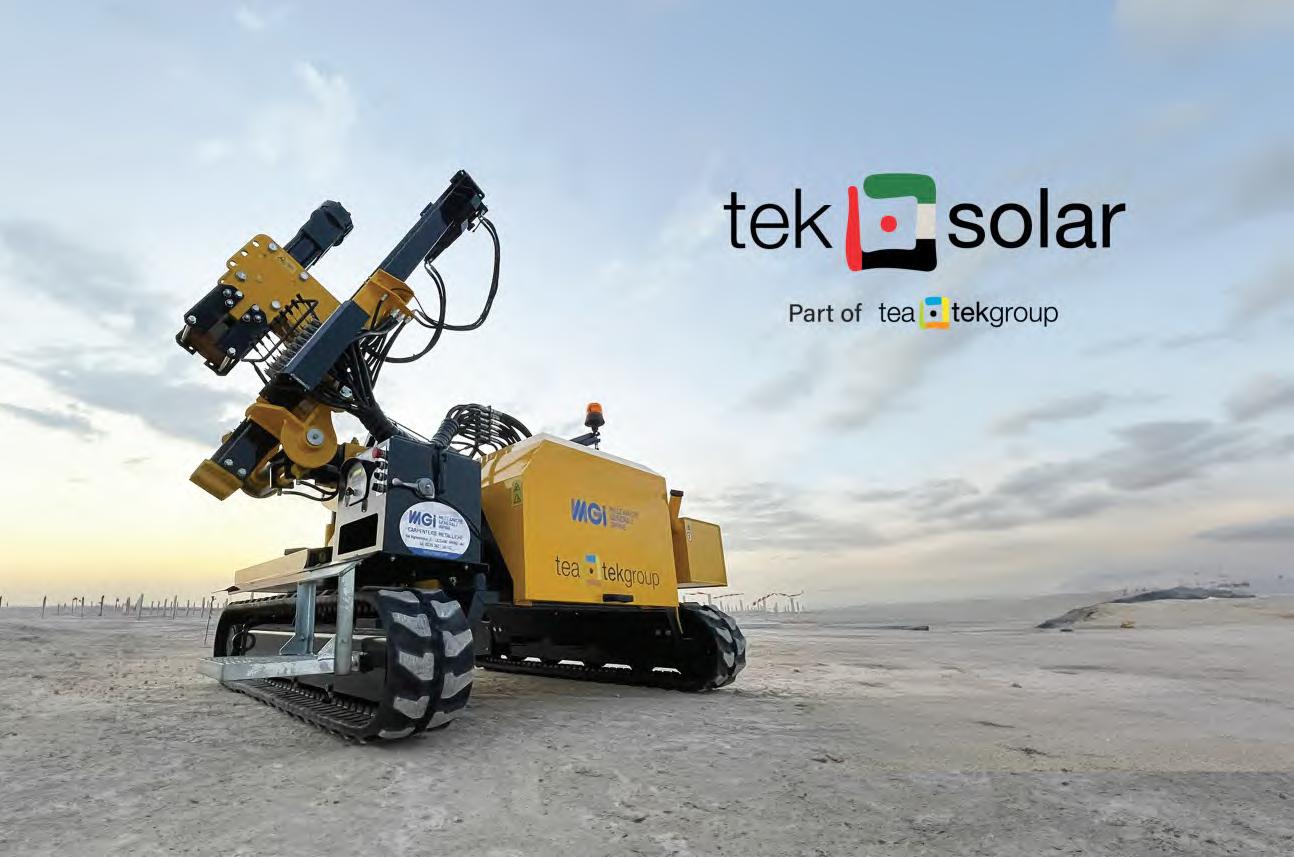
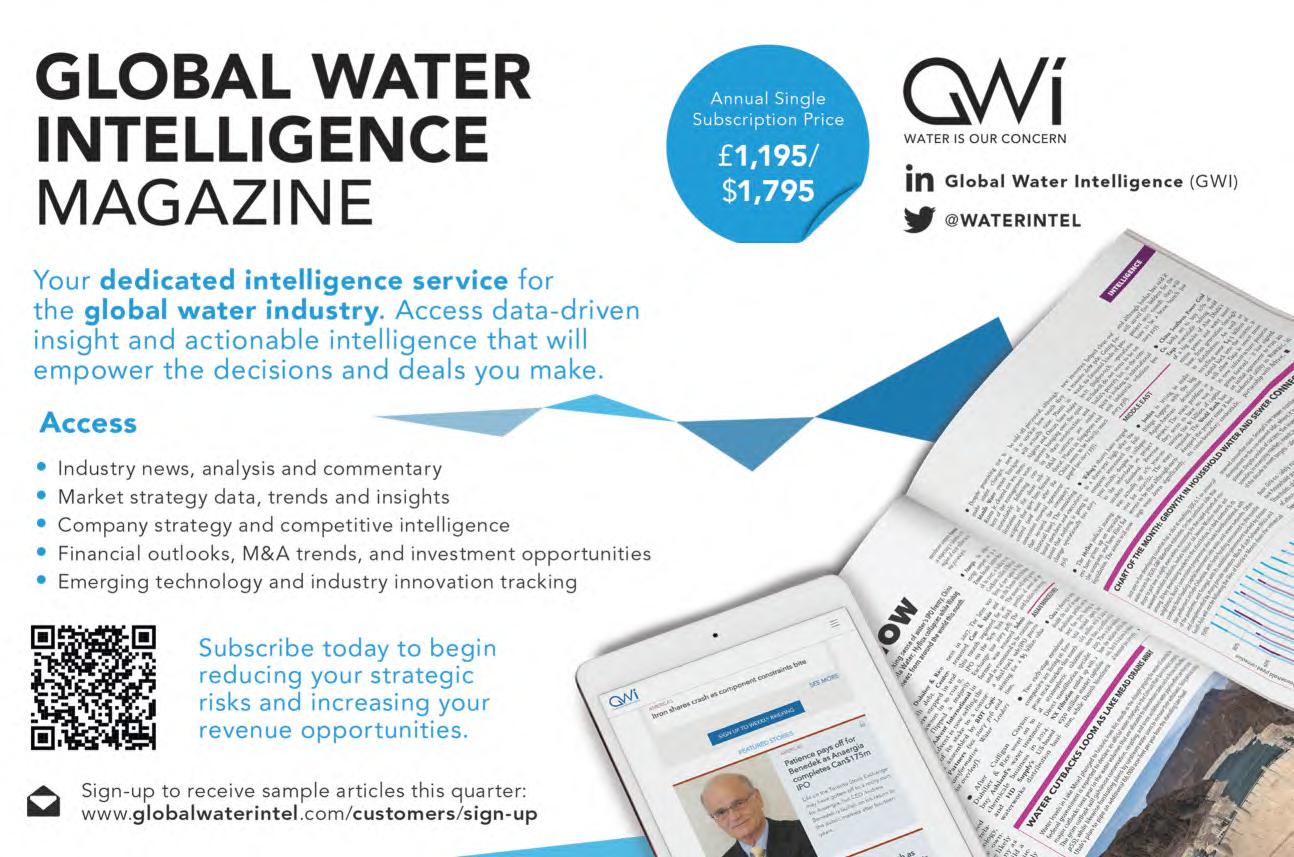

Achieving net-zero within the built environment by 2050
Chris Wan, Associate Director, Sustainability and CSR at Masdar City, discusses the importance of a people-first approach to sustainable master planning for future cities and urban communities.
How important is it to adopt a people-first approach at the master planning stage of future city design?
Cities were originally built with people first in mind. Technologies were designed to serve people. As technology advanced, planning began to evolve to make the technology perform more efficiently. The clearest example of this is the motor vehicle, where the efficiency of transport networks became a main theme in city design. Planning goes wrong when the prioritisation of a city's transport network comes as detriment to the livelihood of its people. We could improve master planning by understanding the original purpose of cities, which is to serve its citizens. The people-first approach is the logical future of city design.
What factors need to be taken into account when designing future cities, to ensure they meet Net Zero objectives and address climate change issues?
For cities, addressing climate change means addressing energy, water, and waste in the built environment. This means addressing GHG emissions from building construction, transportation, and operations. In all cases, moving towards net-zero begins by understanding the impact of every design decision, followed by conscious and active decisions to reduce that impact. That is, GHG reduction needs to be set as a priority in all design and construction endeavours. Setting up numerical targets can be useful with this approach. Using green building materials is not enough; one needs to understand the measured impact and then make a decision on whether the
selection will help take you to your destination of net-zero.
What do you think are the main factors that make Masdar City a beacon of sustainable urban environment design?
From the beginning, Masdar City was envisioned to be about its citizens. Master planners took a humancentric approach, making walkability a priority. Buildings were placed close together where possible to encourage walking from building to building rather using a motor vehicle. The close proximity of the buildings also provided shading, which is welcome in a climate like the UAE's. Masdar City is also a mixed-use community. This adjacency of use provides its citizens easy access between work, shops, schools, parks and sports facilities. At the building level, each structure optimises resource efficiency through passive design followed by very careful selection of technologies. Cost is carefully controlled to ensure all projects are commercially viable to ensure projects are not only environmentally and socially sustainable, but also economically sustainable. Today, Masdar City has demonstrated that a net-zero energy commercial building in operation is commercially viable.
What plans does Masdar City have to further reduce carbon emissions?
Looking into the future of new buildings, Masdar City will continue its journey to reduce its carbon footprint in water, waste, and construction. For the existing buildings, Masdar City is continuing to apply energy efficiency measures to compliment the ongoing maintenance of the buildings.
The people-first approach is the logical future of city design.
Chris Wan Associate Director, Sustainability and CSR, Masdar City
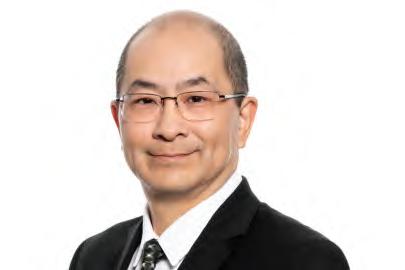
Chris Wan, Associate Director, Sustainability and CSR at Masdar City.
Smart city priorities for residents
By 2050, two-thirds of the world’s population will be living in urban areas, which places a renewed focus on urban living to ensure that the cities of the future are secure, sustainable and inclusive.
The Mastercard Cities of the Future Report 2024 reveals that respondents in the UAE overwhelmingly agree that living in a smart city would make them happier (68%). The majority (61%) of the respondents identified smart and connected buildings and homes as the highest priority innovation, tied with smart travel services (61%). Technological advancements widely generate more optimism than worry. In the UAE, reduced human interaction is the top concern, followed by the possibility of becoming less active. AI/machine learning and the metaverse are considered the most important technologies for a city of the future, supported by fast and seamless data connectivity.
Against the backdrop of the UAE playing host to a landmark COP28 and extending its Year of Sustainability, public awareness of climate action remains high. Smart solutions to move to clean and renewable energy (60%) emerged at the top of the list of anticipated outcomes in the UAE. In the UAE, 85% of respondents believe their cities are ‘maturing’ or ‘mature enough’.
While strong privacy and secure personal data (58%) top the list of aspects seen as enhancing the daily living experience in a city, UAE residents would like to see digitisation make their living environments, workplaces, and payment experiences, more efficient. Digital access to services such as utilities, licensing, banking, and transportation is important (57%), followed by increased environmental sustainability (52%).
www.worldfutureenergysummit.com 13 DAY 3 | 18 APRIL 2024 DAILY NEWS OUR SUPPORTERS: Partners and sponsors 37
wave of digital advancements is set to revolutionise
management.”
“A
water asset
Omar Al Ameri, Water Network Development and Investments, TAQA
